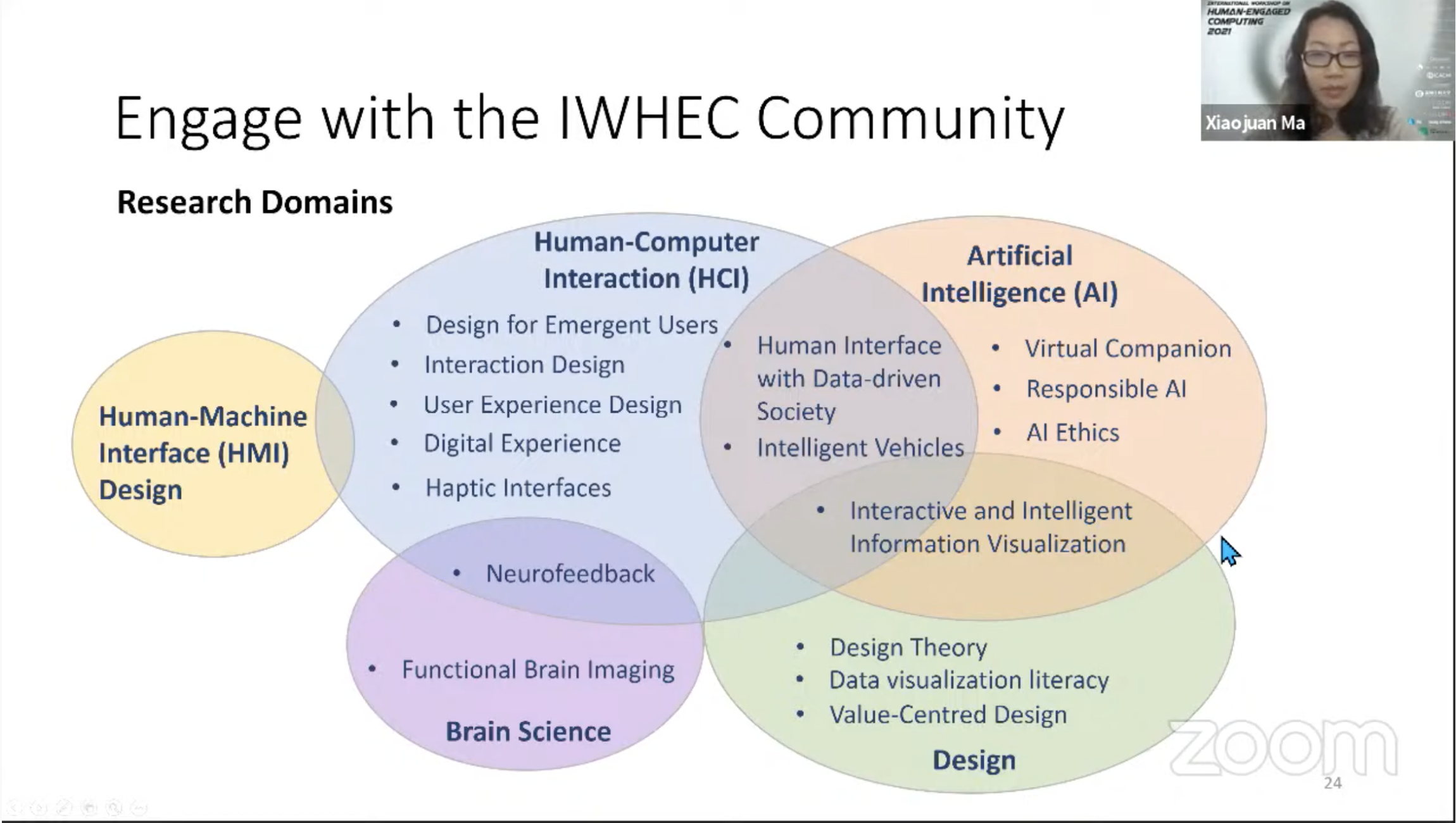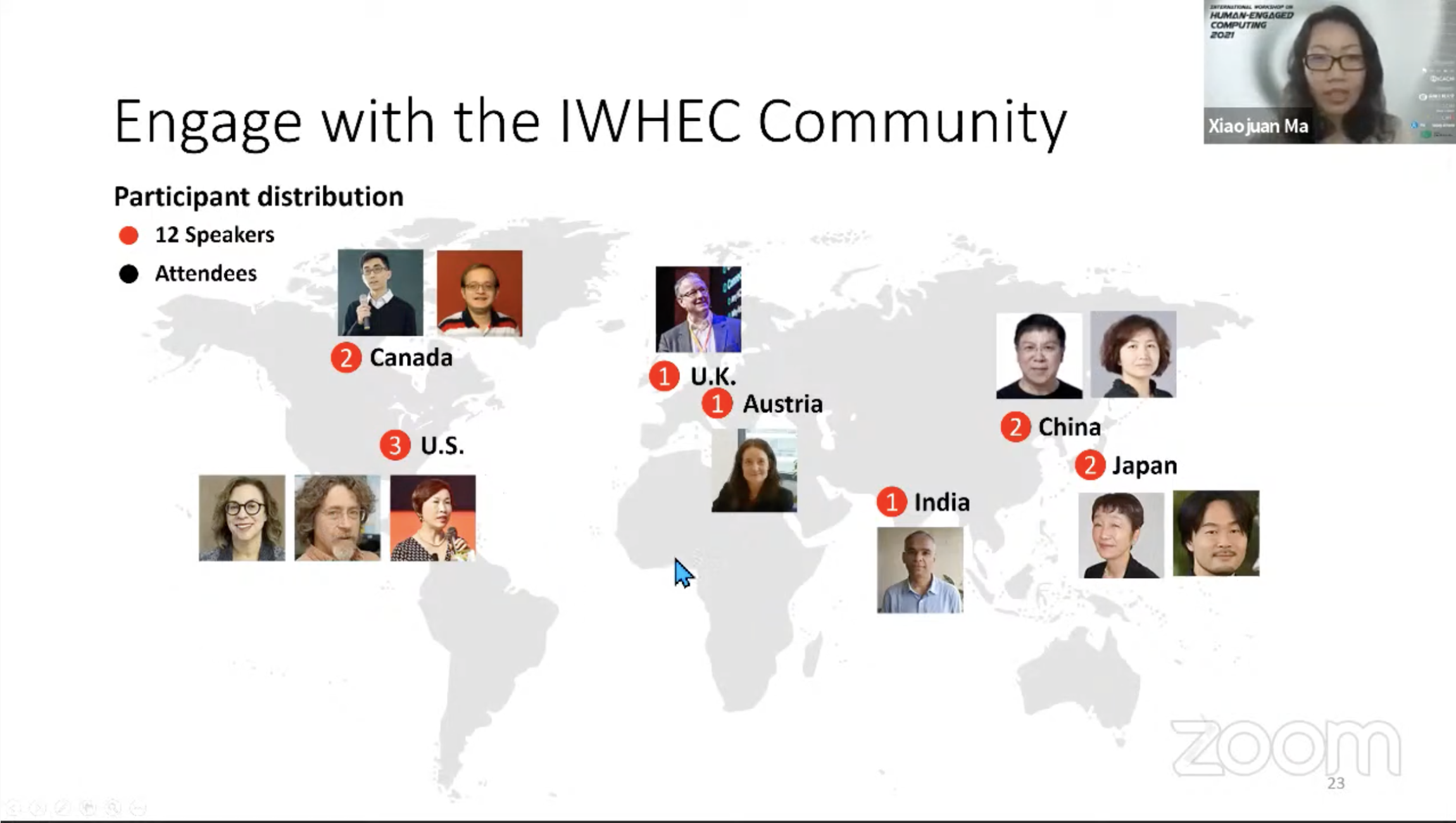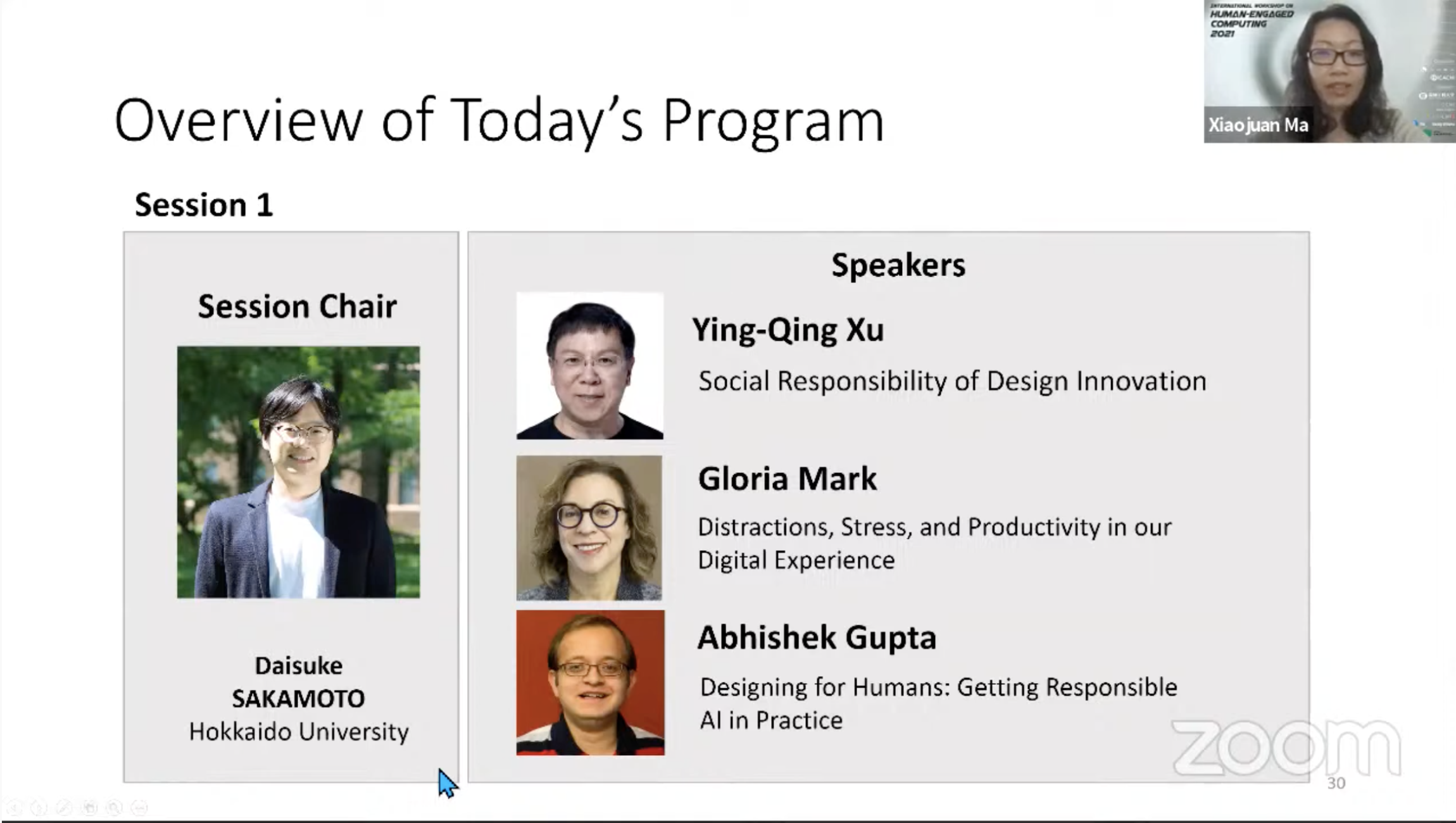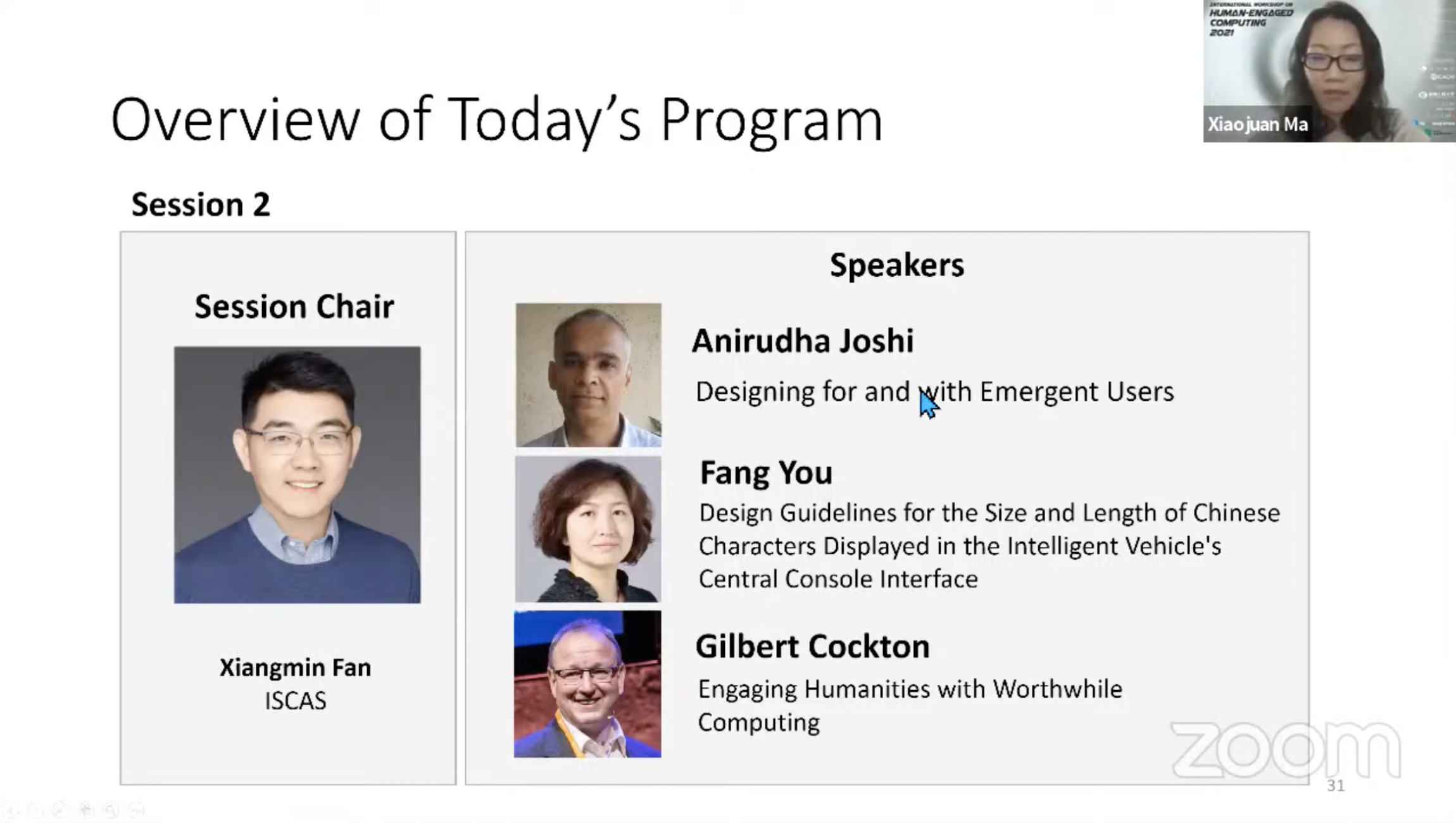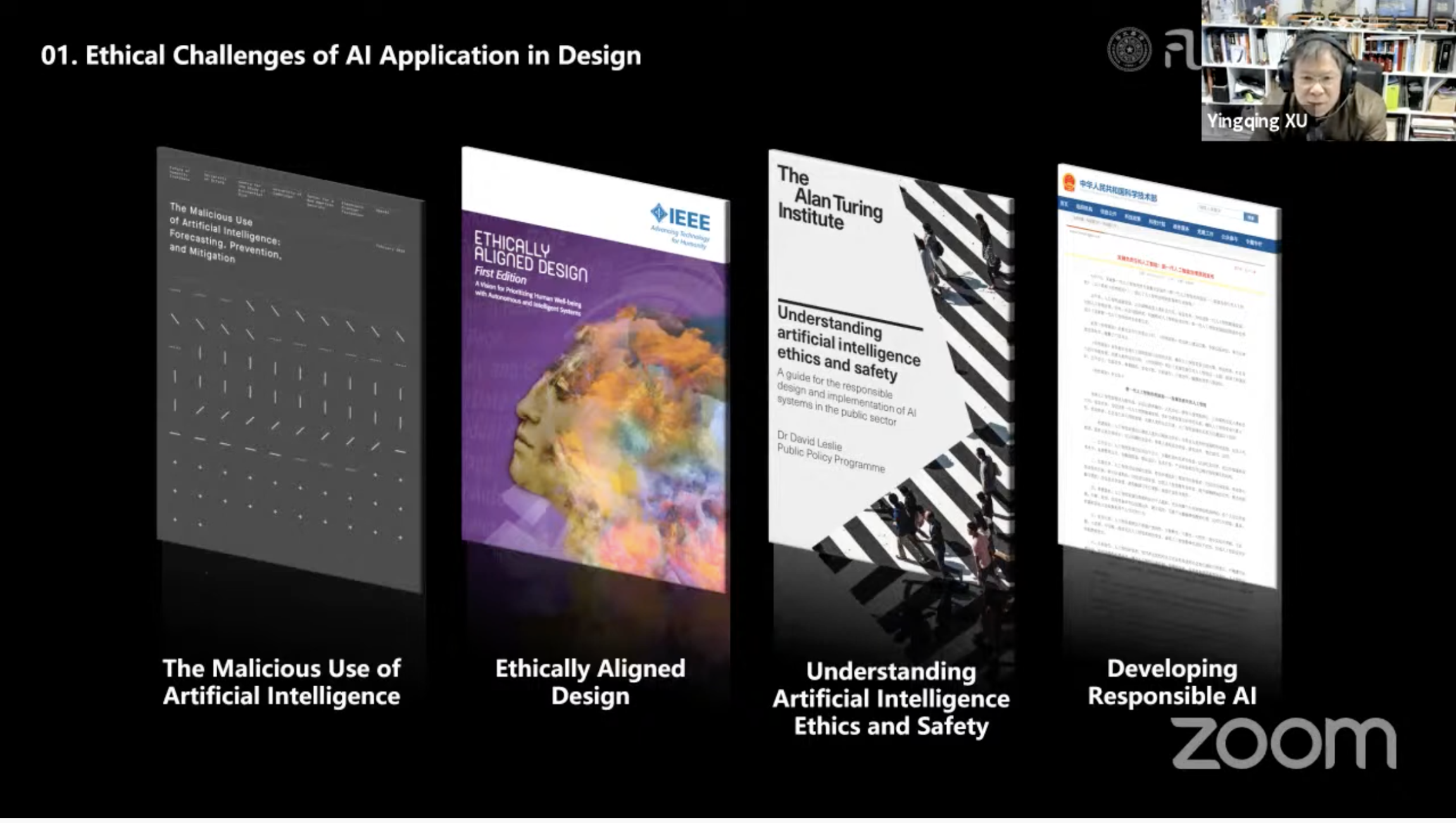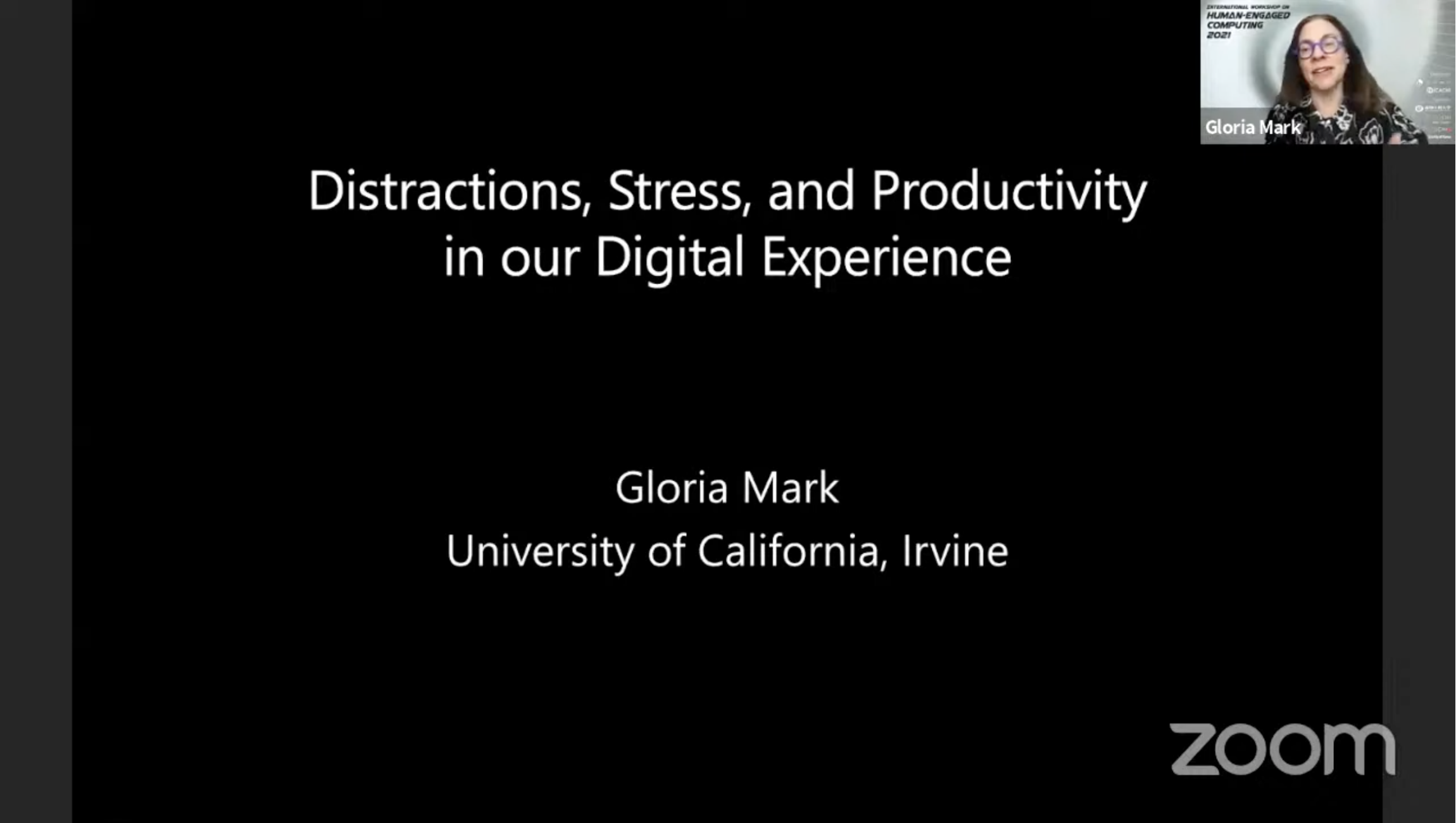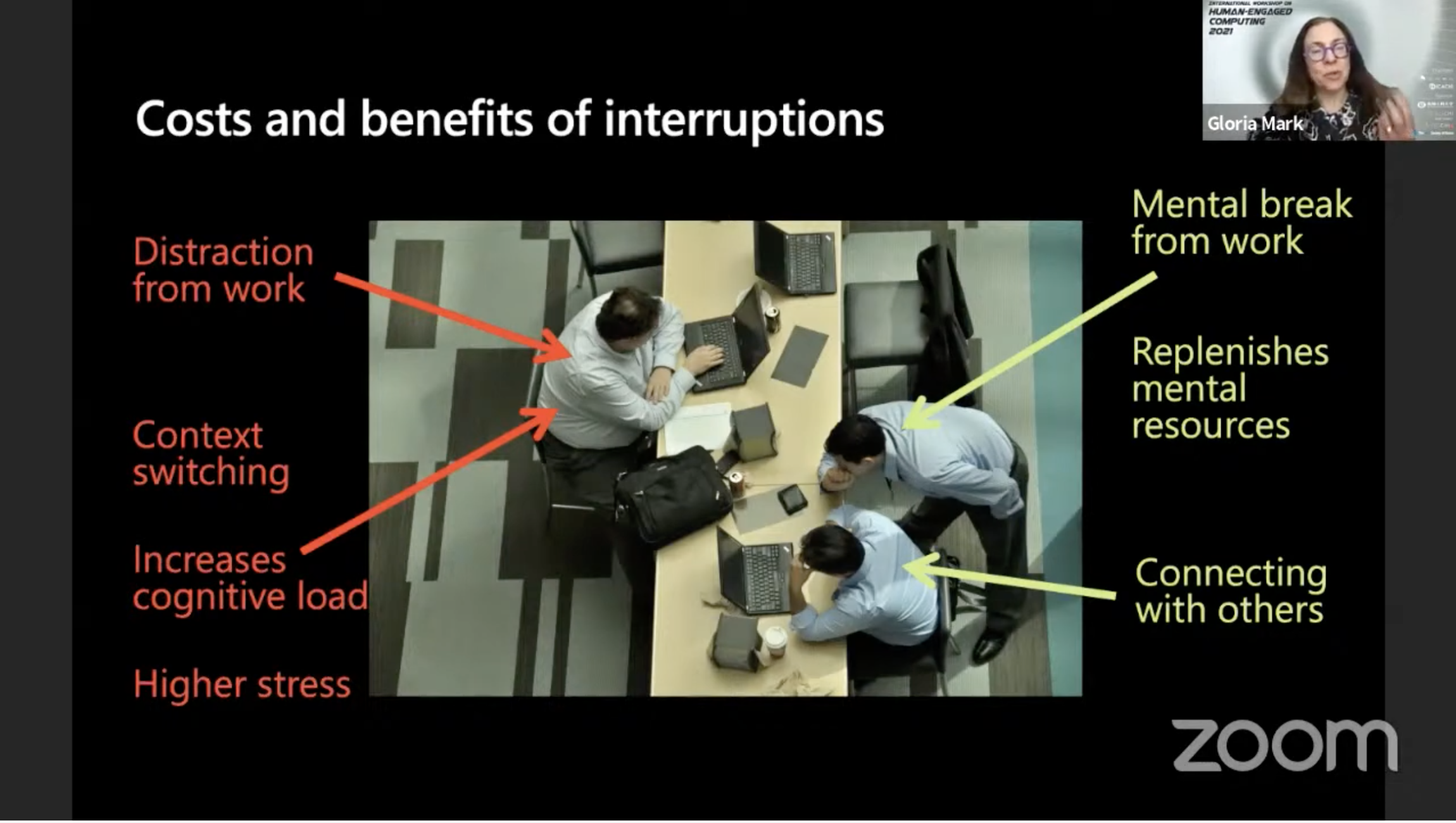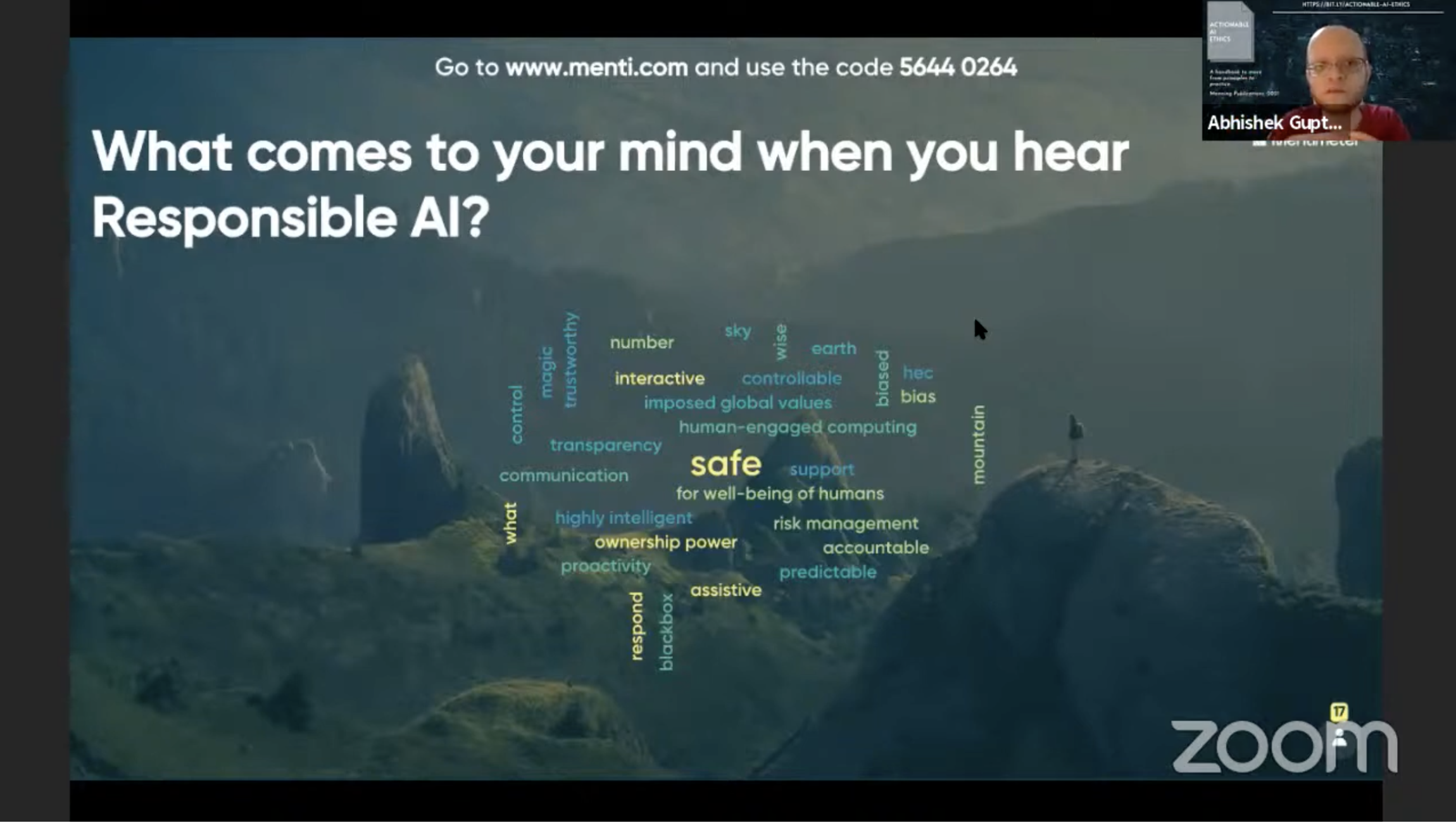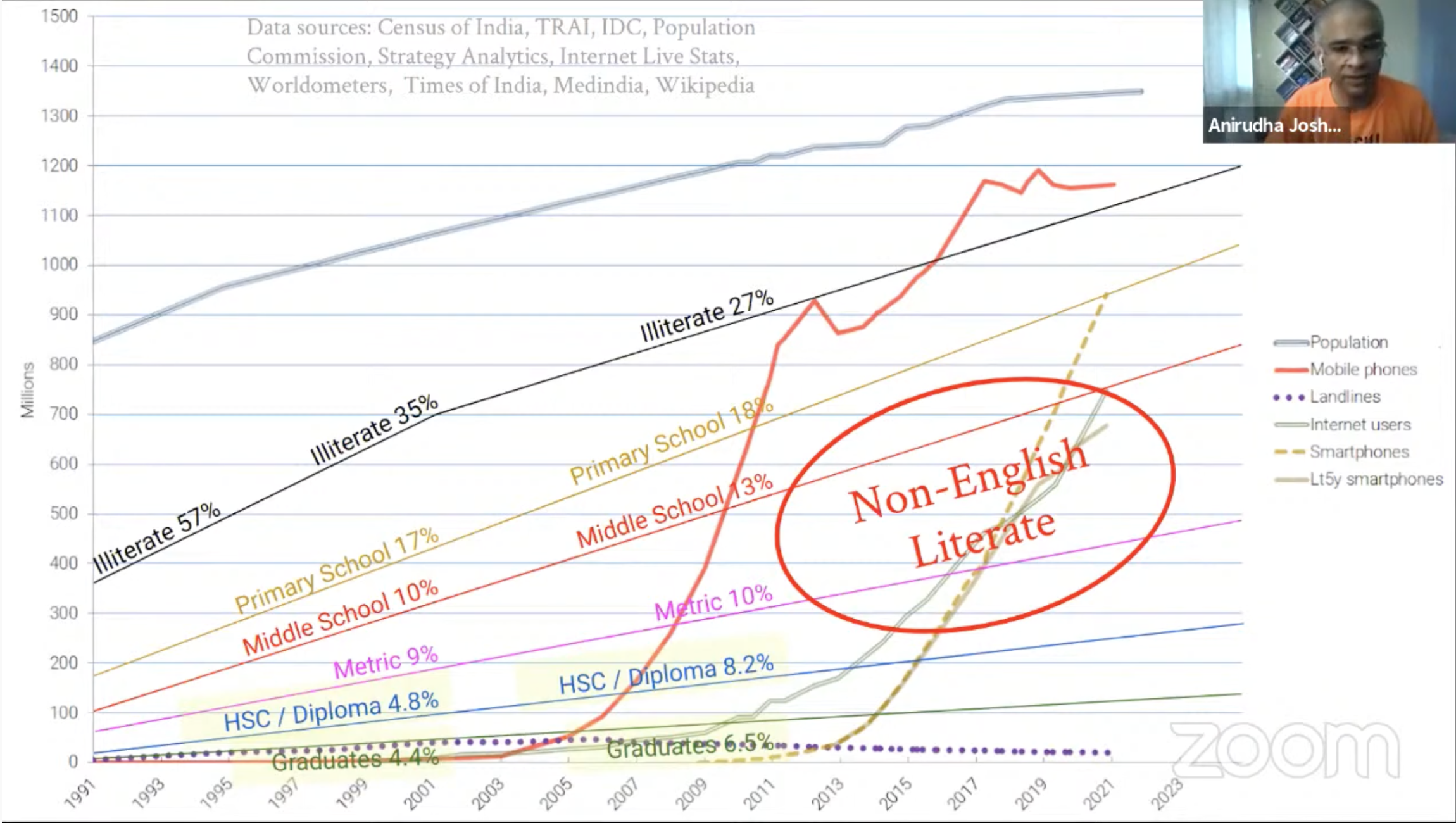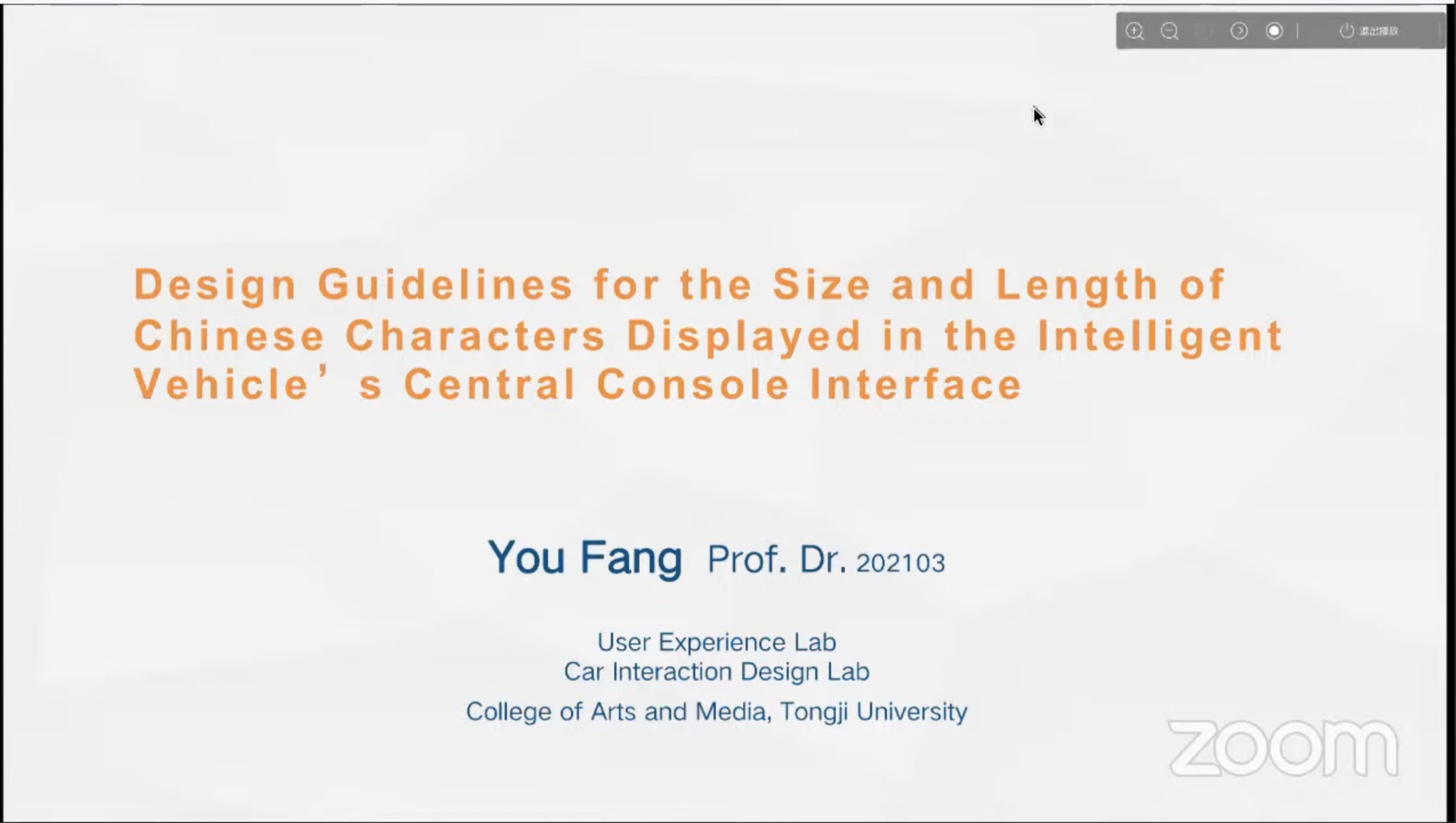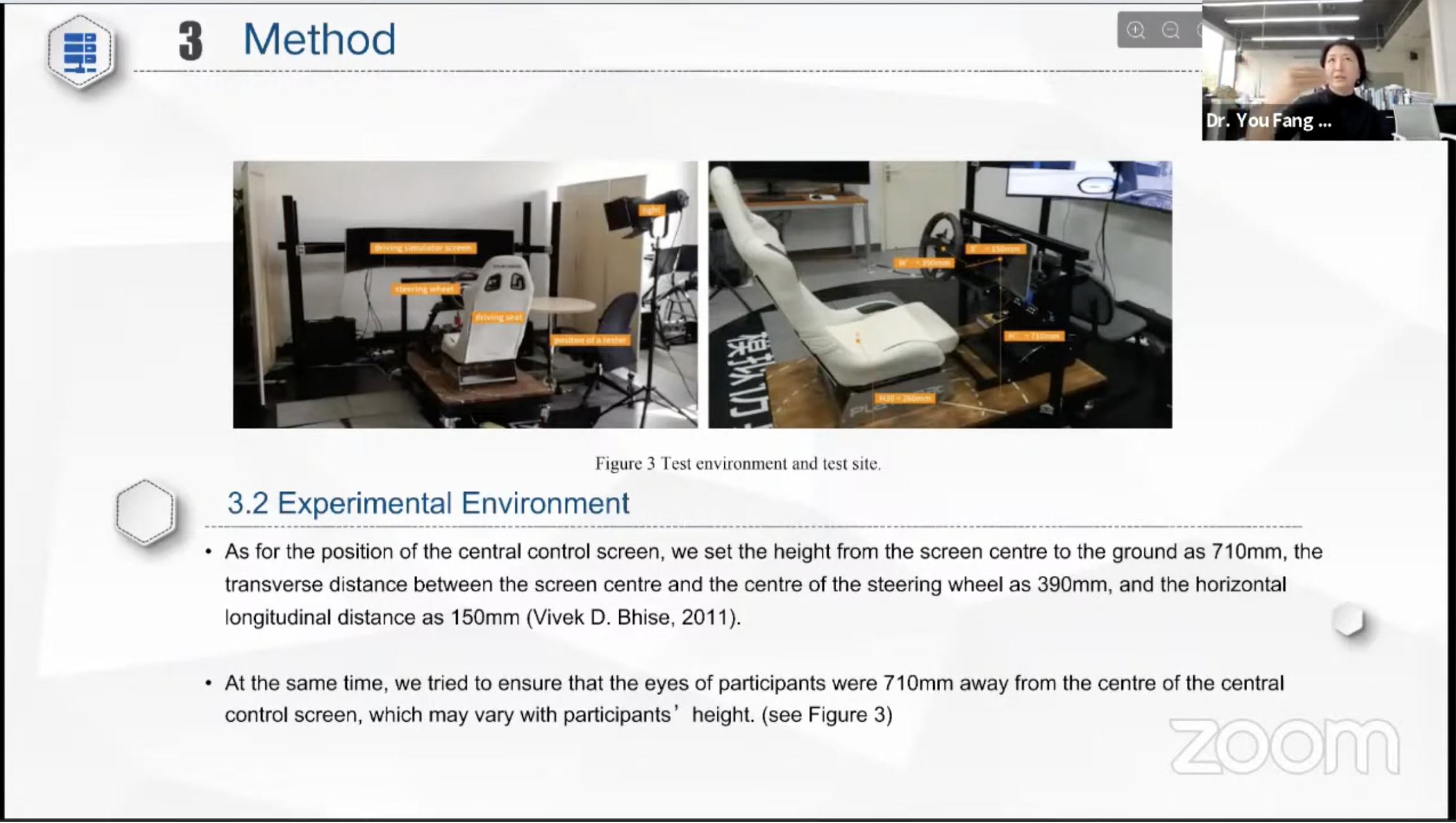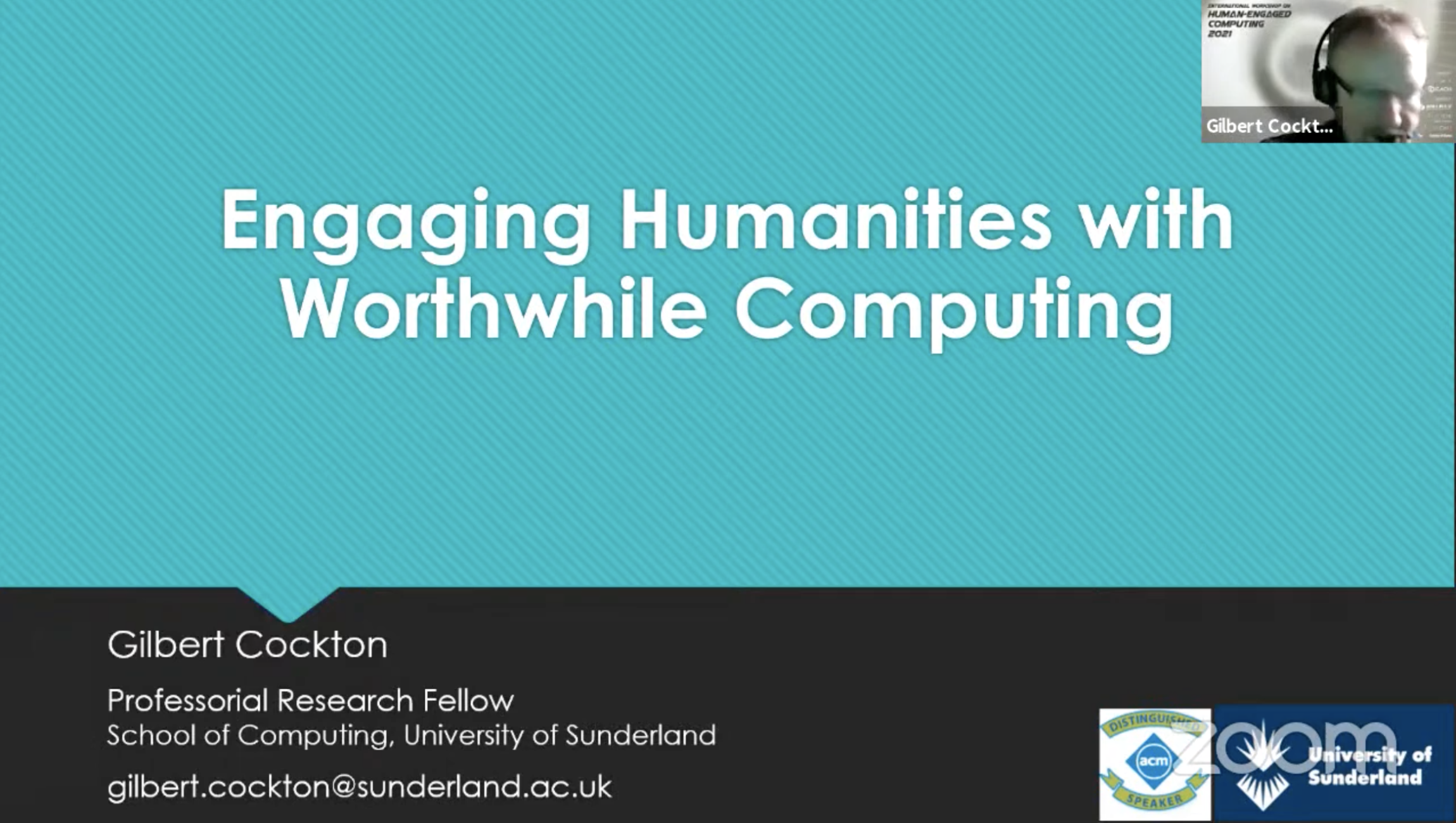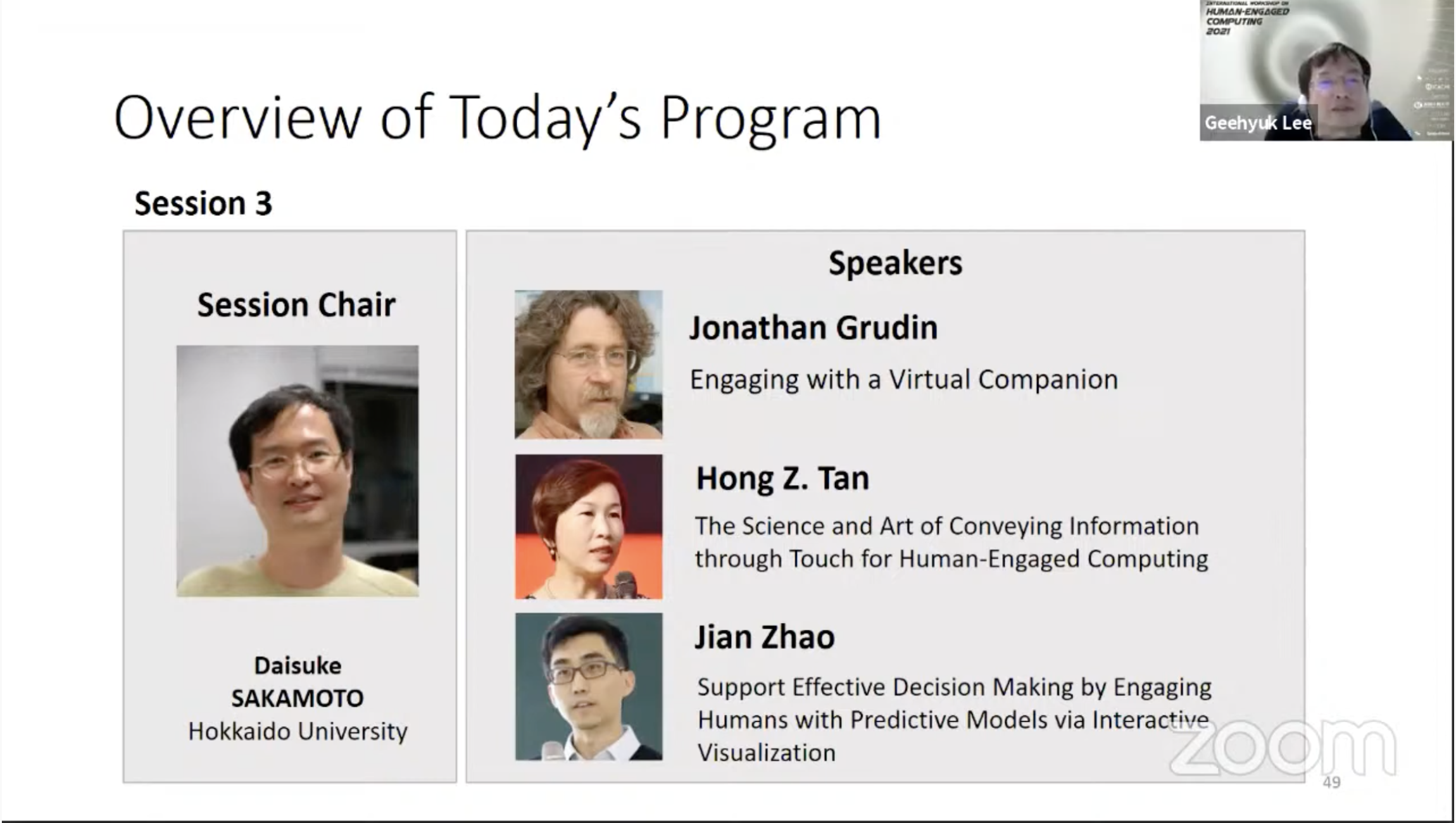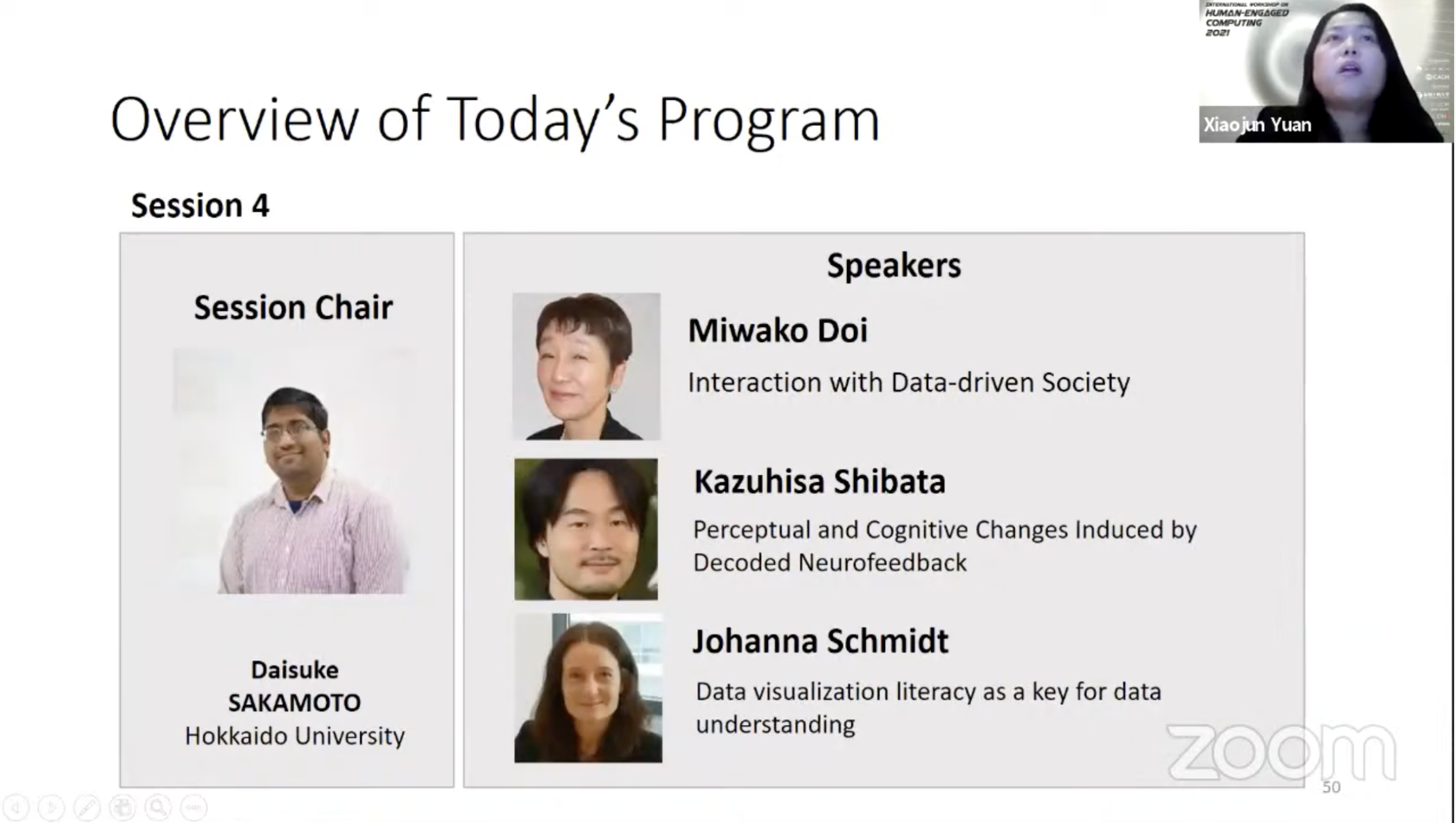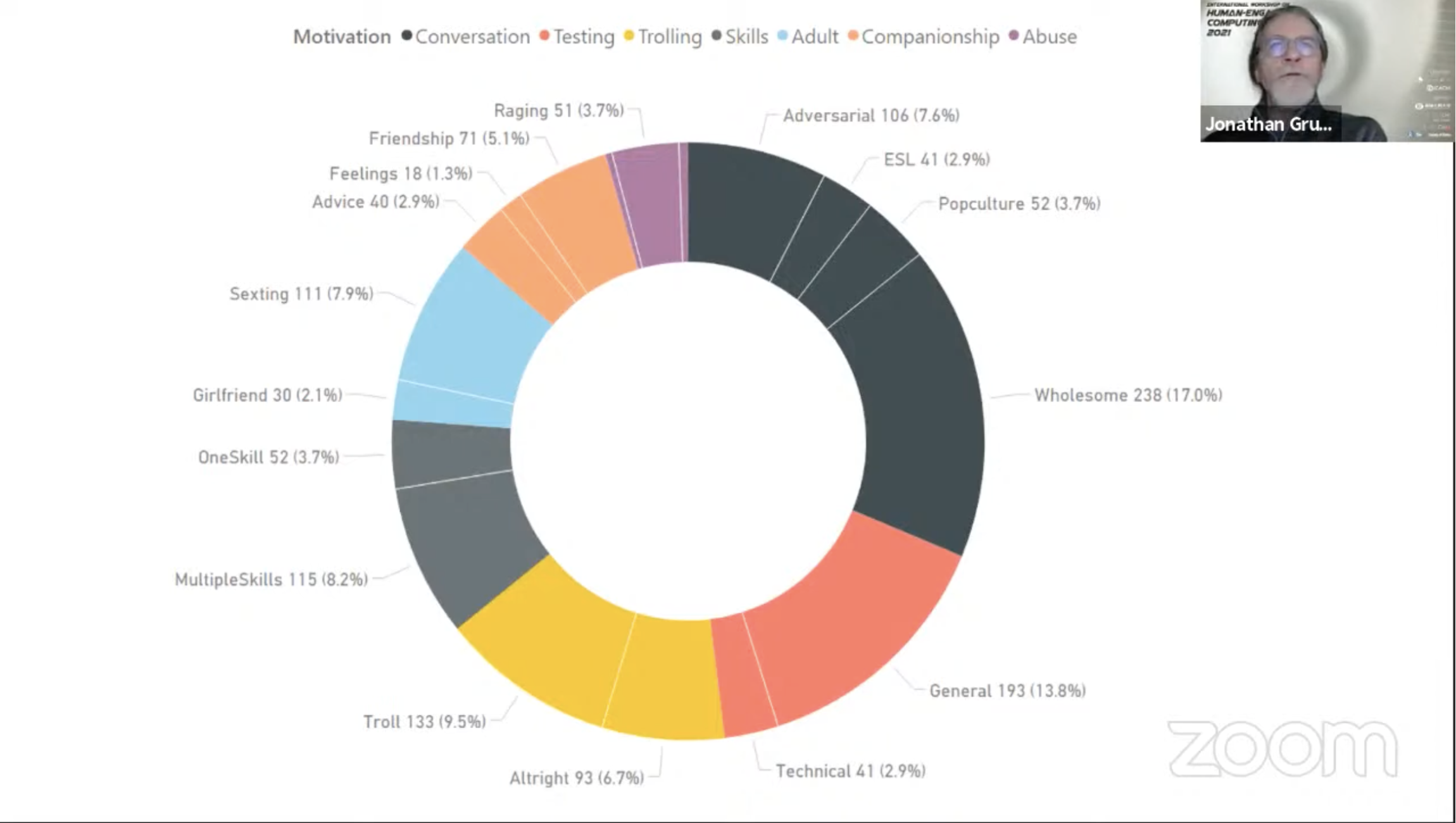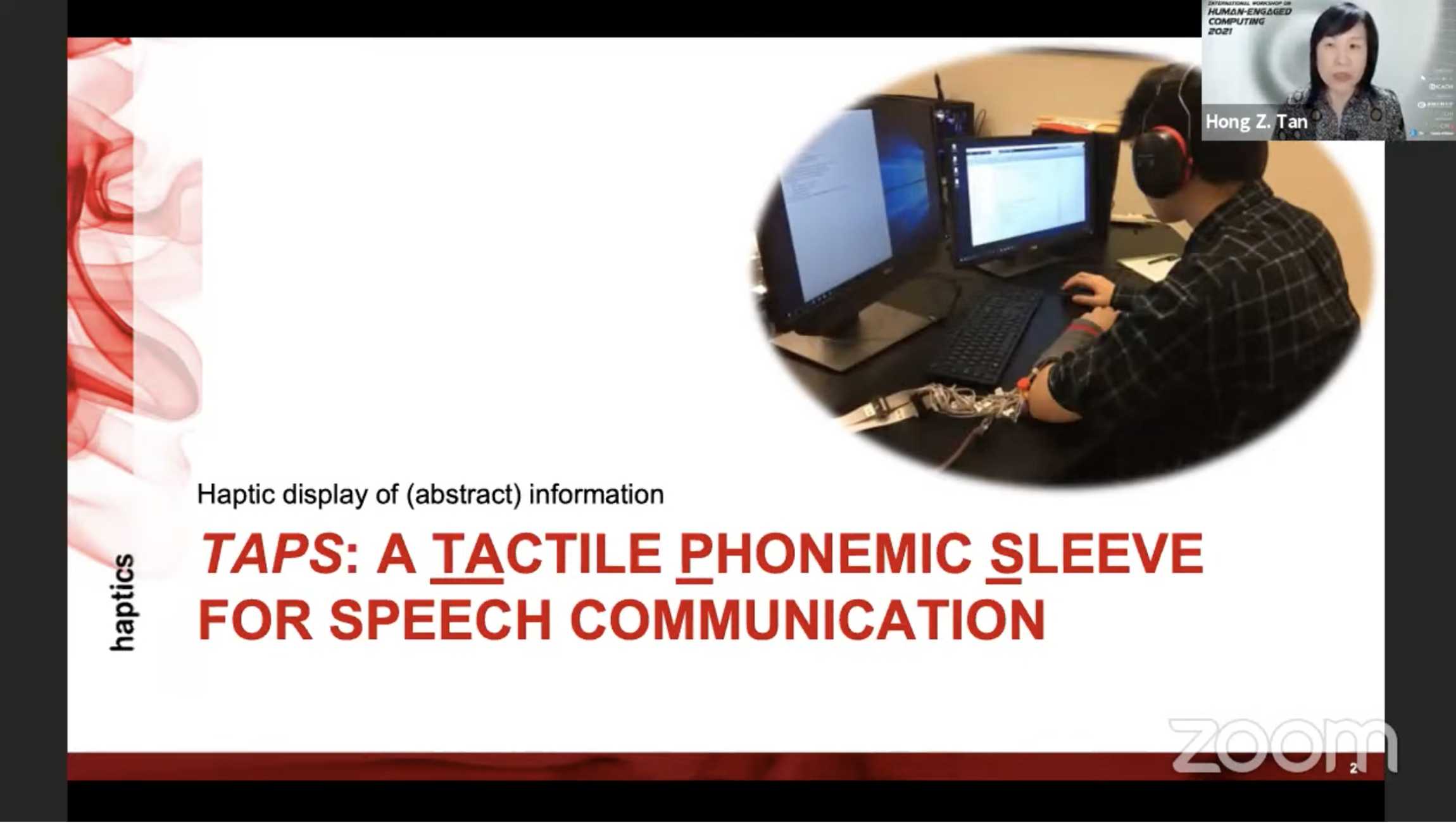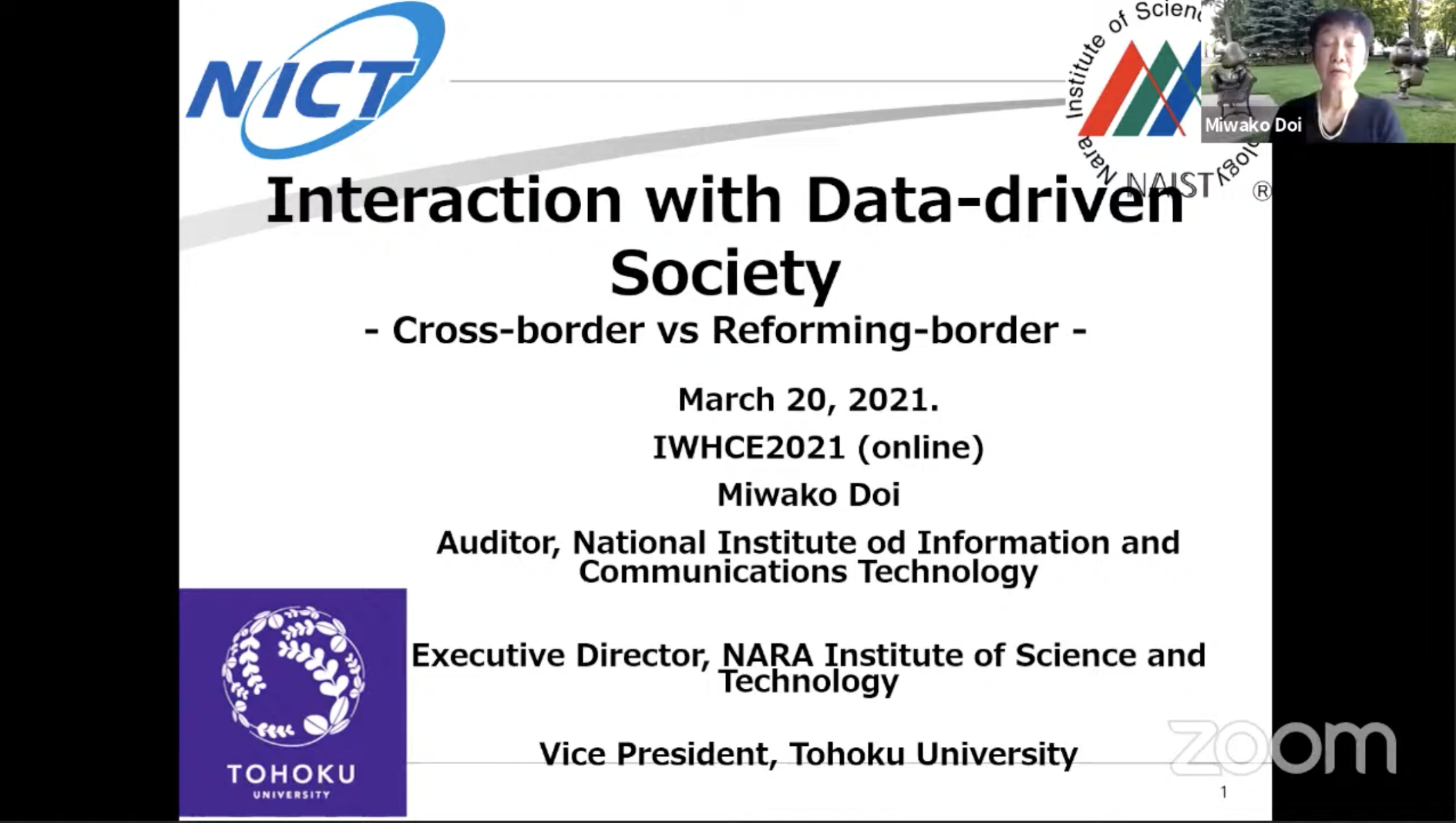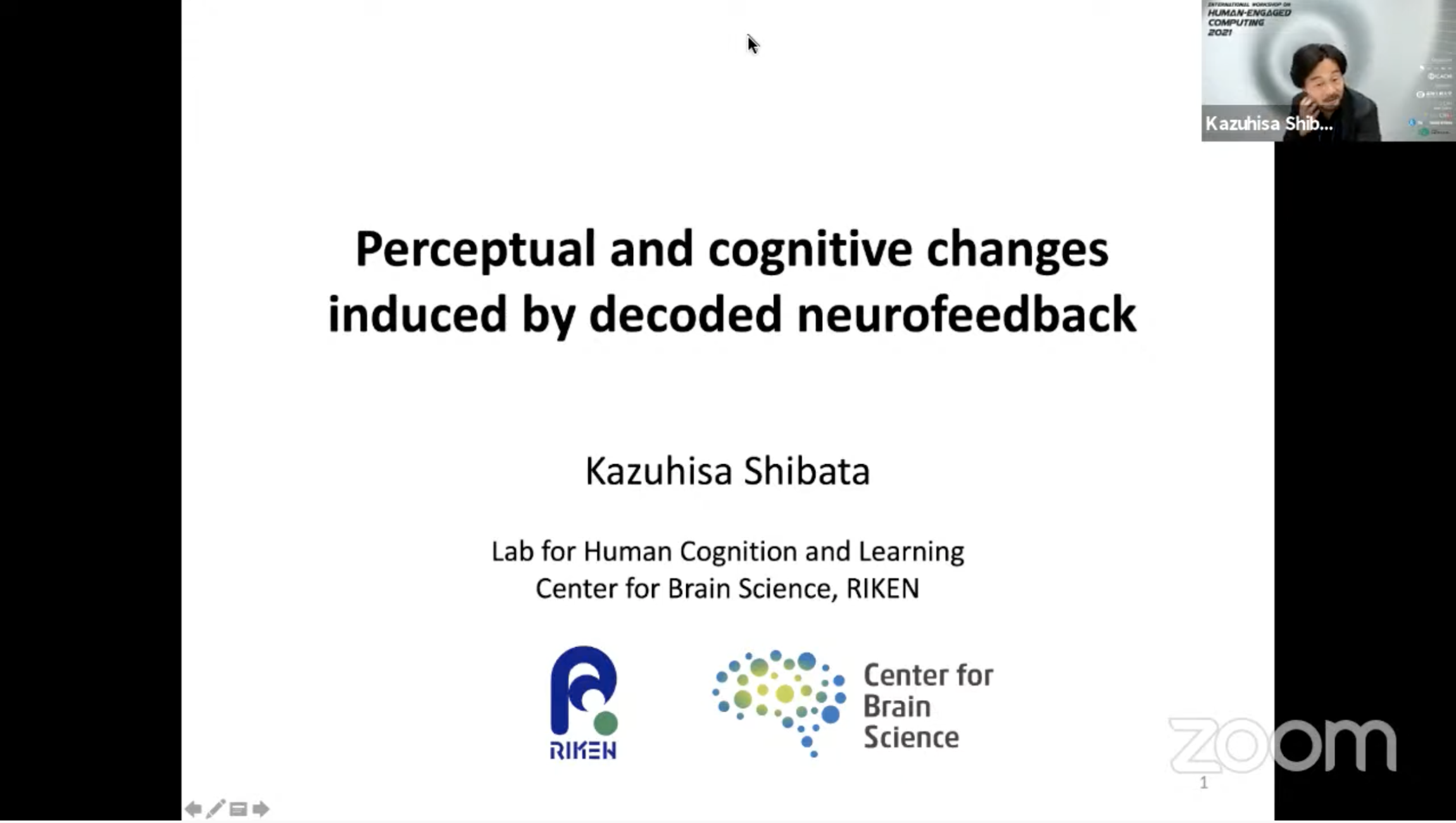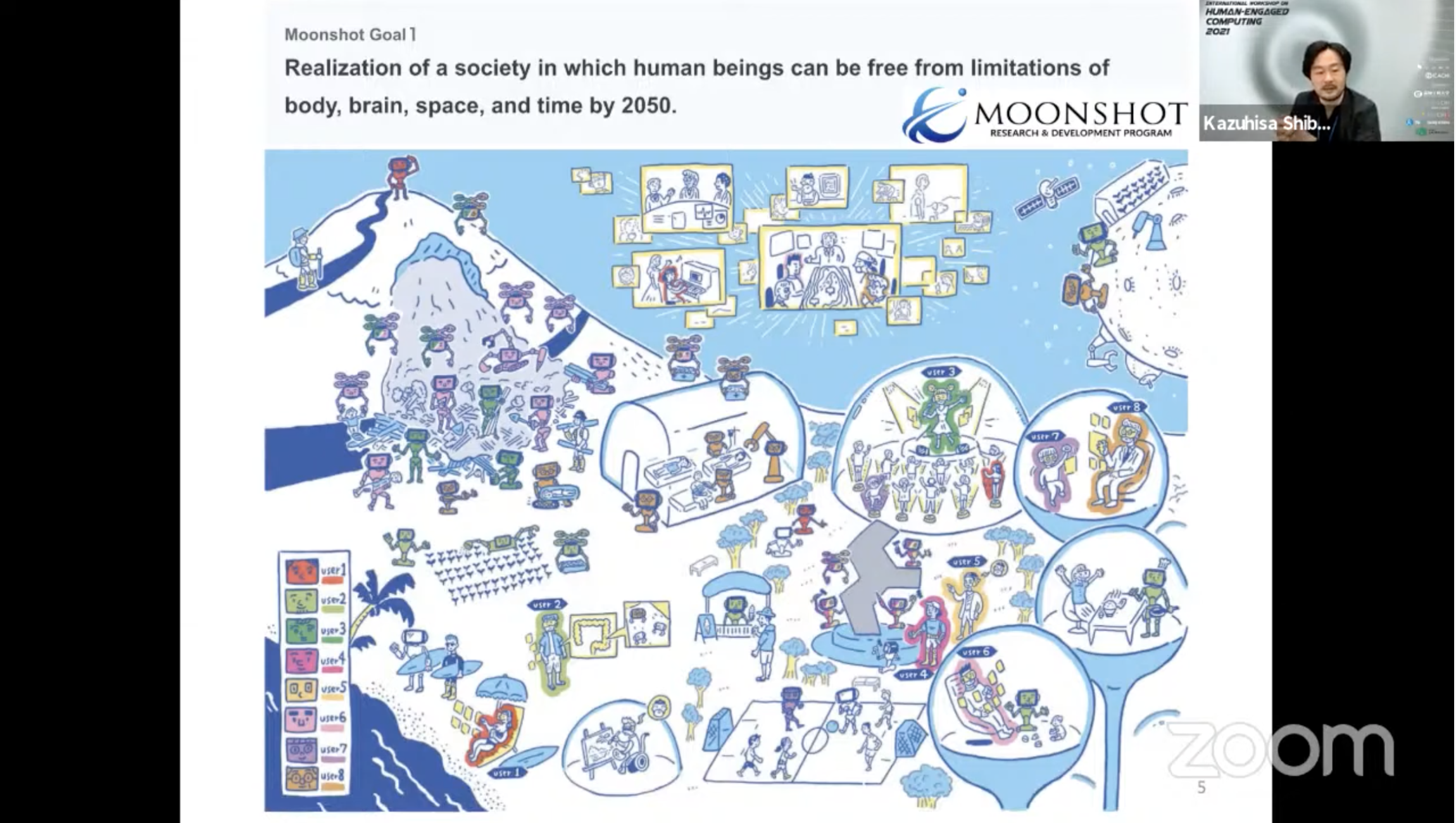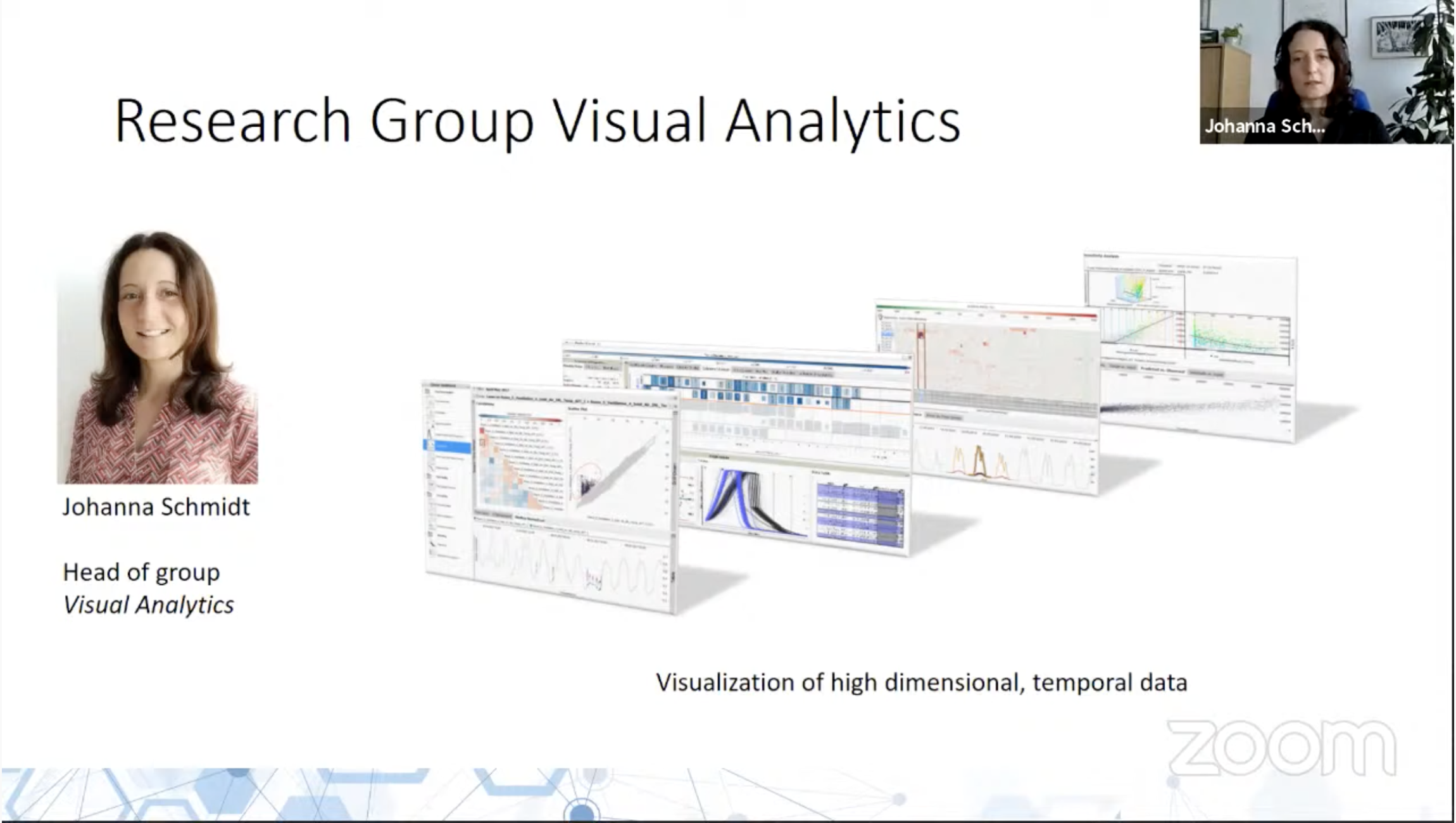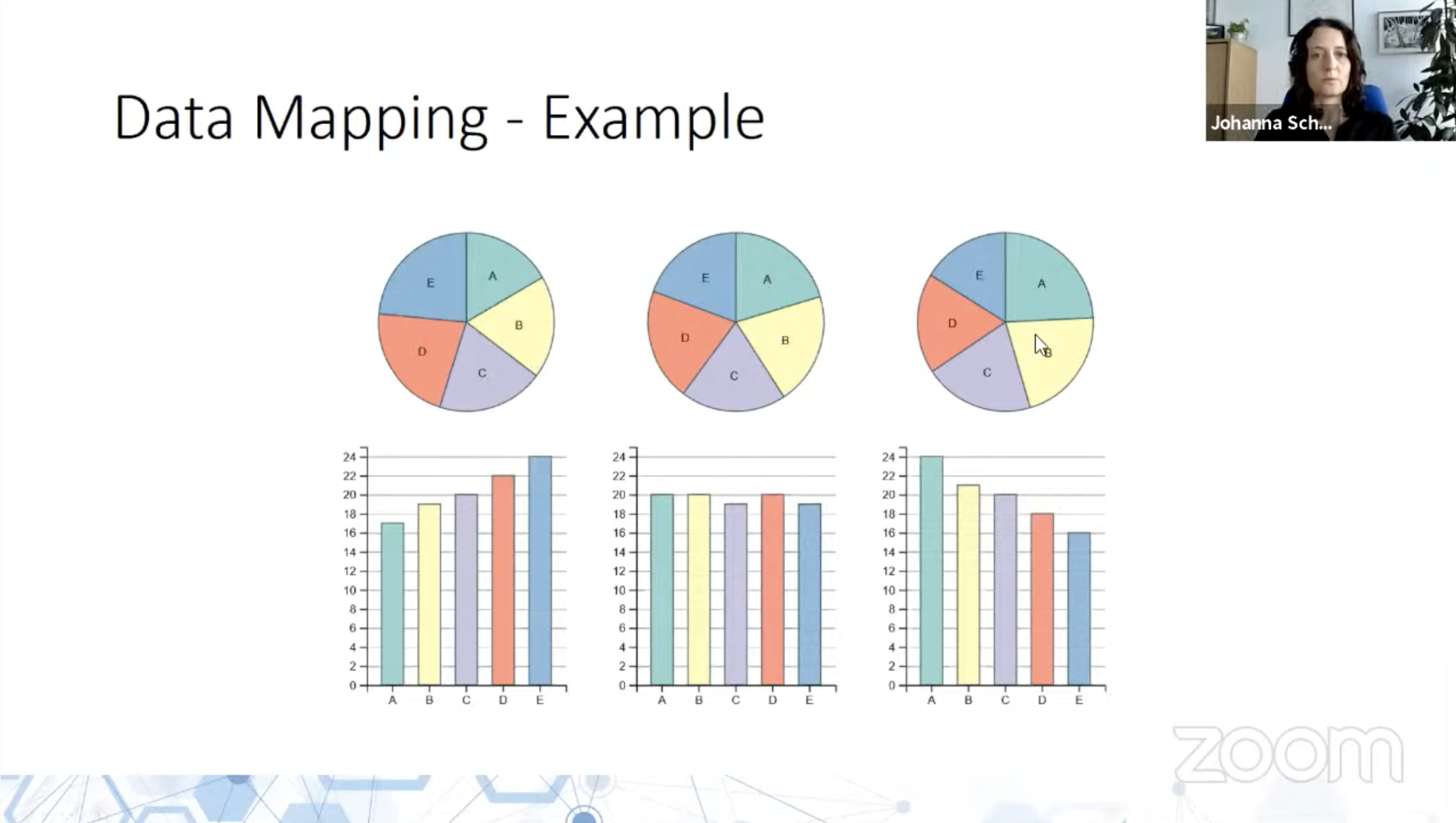International Workshop on
Human-Engaged
Computing
2021
March 19 - 20,
2021
Affiliated Forum, March 21, 2021
Registration Q&A Platform Survey
International Workshop on Human-Engaged Computing (IWHEC)
- Past IWHEC IWHEC 2020 IWHEC 2019 IWHEC 2017
The international workshop on Human-Engaged Computing (IWHEC 2021) focuses on rethinking the relationship between humans and computers. The workshop will be convened online via ZOOM and it will be open to all audiences around the world through webcasts and/or live-streaming platforms.
The aim of this workshop is to rethink the relationship between humans and computers. The workshop will strive to achieve a common platform to advance various idea exchanges around the world, resulting in the evolution of a stronger workforce in order to create a better world to live in. We are inviting distinguished speakers from around the world and from several domains such as human-computer interaction, brain science, computer science, AI, engaged human, engaging technology, design so on.
Covid-19 has significantly impacted the lives of every person on the planet. Much of the world that was familiar to most people is in pause mode. People are ordered to stay at home in order to save lives by slowing the spread of the deadly virus. Fortunately, with the fast development of computing technologies and digital services, along with the rapid construction of information infrastructures, people are able to source information from television media, radio broadcasts, social media, and various Internet avenues. Technologies are playing a central, critical, and arguably indispensable role in our daily lives during the pandemic. But the new efficiencies afforded by new technologies is a two-edged sword, and it is capable of healing or harming human relationships, human integrity and human enterprises. For example, efficient private and personal access to information, accessible publishing, and new modes of social interaction open the door to the dissemination of fake news, to trolling, to prejudiced opinions and to undue influence that overwhelms and confuses people more efficiently than ever before. On the other hand, responses to such threats seem to invite despotic intrusions into privacy and the potential diminishment of the right to personal opinions and personal expression. Thus, besides dealing with the relationship between humans and computers under consideration of the human future in general, the workshop also seeks to suggest how researchers who work on the relationship between humans and computers can help develop and enhance the user’s ability to distinguish between inauthentic and authentic information during and after the current crisis.
Jonathan Grudin is a principal researcher at Microsoft and affiliate professor at the University of Washington Information School. Before joining Microsoft Research, he was Professor of Information and Computer Science at UC Irvine. He has been active in the ACM Computer-Human Interaction group and the Computer-supported Cooperative Work field since their inception. He is an ACM Fellow and member of the CHI Academy. He has published on the history of human-computer interaction in Annals of the History of Computing, AI Magazine, handbook chapters, and a 2017 book From Tool to Partner: The Evolution of Human-Computer Interaction. His website is jonathangrudin.com Read more Read less
Engaging with a Virtual Companion
The original goal of Artificial Intelligence was to create software that could engage with people conversationally. This has proven to be exceptionally challenging in many respects. It is an effort to understand humans deeply enough to create a simulated human that will engage convincingly with real humans on real topics, under time pressure. The system must not only recognize but also produce individual and collective human capacities. Some chatbots also encounter trolls or others who attempt to lure it to engage in socially undesirable ways. I will describe a study that identifies different patterns in the way thousands of people engaged with one conversational agent over a few years. Read more Read less


Engaging Humanities with Worthwhile Computing
We have considered people in design for decades, but only in part.
Ergonomics and early HCI focused on physical human factors such as input devices and
perception for computer displays.
Over the decades HCI’s scope extended to consider interaction, conceptual models, and
experience. However, this remained largely centred on the computer, for example
considering how well a conceptual model could be understood or how an interaction
would be experienced. A more balanced approach would simultaneously consider design
concepts alongside what people may find worthwhile. We need to engage people in their
specific slices of life (‘humanities’) with interactions that are designed to be
worthwhile.
In this presentation I will argue for the need to simultaneously consider designs,
their evaluations, their purpose, and who will benefit and when and how (and who will
not). Rather than iterate through fixed stages in sequence, we need to progress and
connect design arenas in parallel. We need to extend our repertoire of connections in
HCI. I will present examples of novel approaches that support simultaneous progression
and connection of design arenas: Worth Sketches and Maps, and Use Experience Cases. I
will also briefly outline other forms of connection for Interaction Design.
Read more
Read less
His two recent books on Worth-Focused Design ( bit.ly/3aqIvRK and bit.ly/3cFoWXm) for which a 25% discount is available using the code IWHEC.
Gilbert Cockton retired in February 2019 as Professor of Design Theory at Northumbria University, where he is now Emeritus Professor. He is currently a part-time research fellow in University of Sunderlandʼs School of Computer Science. He began Interaction Design work in 1982 with design and implementation of e-learning. He has worked for and within businesses at many points in his career and has directed major regional digital sector support projects (Digital Media Network, CODEWORKS NITRO, HEFCE Digital CoKE). In the latter roles he contributed to developing the north east of England into a major UK centre of creative digital technology. He has had leadership roles in major conferences and journals. He was awarded the SIGCHI Lifetime Service Award in 2020.Gilbertʼs background is multidisciplinary (Humanities and Applied Human Science bachelors and postgraduate degrees, Computer Science PhD, UK national NESTA fellowship on value-centred design). He has over 270 publications on software architectures, design notations, context of use, accessibility, usability, user experience, e-learning, design theory, and resources for design work (including agile/lean). He has given almost 200 presentations in 25 countries, supervised and advised 35 research students, and examined over 40 PhD students. His research now focuses on software design practices that balance and integrate creative, strategic, behavioural and engineering inputs. Read more Read less
Hong Z. Tan is a Professor of Electrical and Computer Engineering in the College of Engineering at Purdue University, with courtesy appointments in the School of Mechanical Engineering and the Department of Psychological Sciences. She directs the Haptic Interface Research Lab that investigates the science and technology of displaying information through the sense of touch, taking a perception-based approach to solving engineering problems. Tan received her Bachelor's degree in Biomedical Engineering from Shanghai Jiao Tong University and earned her Master and Doctorate degrees, both in Electrical Engineering and Computer Science, from the Massachusetts Institute of Technology (MIT). She was a Research Scientist at the MIT Media Lab before joining the faculty at Purdue University in 1998. Tan has held a McDonnell Visiting Fellowship at Oxford University, a Visiting Associate Professorship in the Department of Computer Science at Stanford University, a Guest Researcher position in the Institute of Life Science and Technology at Shanghai Jiao Tong University, a Senior Researcher and Research Manager position at Microsoft Research Asia, and a Professorship at Beijing Normal University Faculty of Psychology. She was a recipient of the prestigious US National Science Foundation CAREER award and a Chinese National Natural Science Fund’s Distinguished (Overseas) Young Scholar. In addition to serving on numerous program committees, Tan was a co-organizer of the Haptics Symposium from 2003 to 2005, served as the founding chair of the IEEE Technical Committee on Haptics from 2006-2008, and co-chaired the World Haptics Conference in 2015. She served two terms as an Associate Editor of the IEEE Transactions on Haptics, and was the Editor-in-Chief of the World Haptics Conference Editorial Board from 2012-2015. Tan was elevated to IEEE Fellow in 2017 for her contributions to wearable haptics. Read more Read less
The Science and Art of Conveying Information through Touch for Human-Engaged Computing
As we rethink the relationship between humans and computers for the future of HCI, we also need to re-examine how the sense of touch contributes to human-engaged computing. Haptic interfaces can convey information, affect, or both. In the first part of this talk, I will describe project TAPS as an example of the science of conveying speech information through touch. We have long known that speech communication through the skin is possible through research on natural methods of tactual speech communication used by individuals with severe hearing and/or visual impairments. Despite a long history of research, however, the development of sensory-substitution devices to support the communication of speech has proven to be a difficult task. We have now demonstrated that up to 500 English words can be learned at a rate of 1 word per minute on a TActile Phonemic Sleeve (TAPS) worn on the forearm. Key insights in designing distinctive haptic symbols, mapping all 39 English phonemes to the symbols, and training learners to recognize phonemes and words will be described. In the second part of this talk, I will present project palmScape as an example of the art of conveying emotion through touch. The palmScape is a tactile display for the palm that delivers calm and pleasant vibrotactile patterns evocative of familiar natural phenomena. I will describe the display itself and the signal design journey. The results from an affective rating study confirm that the sensations evoked by palmScape are visceral and delightful. I will wrap up the talk by speculating ways that haptic interfaces can contribute to human-engaged computing by conveying information in a calm and delightful manner. Imagine a world where touch serves as an additional or alternative channel of communication for people with all levels of sensory capabilities, and tactile emojis bring smiles to everyone’s face! Read more Read less


47 Seconds of Focus: Distractions, Stress and Productivity in our Digital Experience
Most of us spend our days among two different environments: an offline physical world but also an online digital world. In this talk I will discuss over a decade of empirical research that reveals the effects of digital media use in peopleis enabling new ways to measure human behavior in situ unobtrusively and with pr’s everyday lives. The ongoing revolution in the development of sensor technologies ecision. I will discuss how I create living laboratories using a mixed-methods approach with unobtrusive sensors, showing for example, how attention focus, stress and affect are impacted by digital media use, and how attention follows rhythms over the day. I will discuss the role of cognitive processes in using digital media and how mental resources are taxed, for example when people switch rapidly among multiple tasks or try to inhibit distractions. Attention is goal-directed, and maintaining goals is especially hard when working with digital media where there are competing demands on attention. There are also individual differences and physiological effects in maintaining focus while on digital media. I claim that placing the burden on individuals to be self-disciplined to focus is the wrong approach. I will discuss other strategies, including how technology might support people in being more focused and productive with digital media. Read more Read less
Gloria Mark is a Professor in the Department of Informatics, University of California, Irvine. Her research focuses on studying how the use of digital technology impacts our lives in real-world contexts. Her goal is to use these insights to promote positive experiences for information technology use to increase health and well-being. She received her PhD in Psychology from Columbia University. Prior to UCI she worked at the German National Research Center for Information Technology (GMD, now Fraunhofer Institute) and has been an ongoing visiting researcher at Microsoft Research since 2012, and also had been a visiting researcher at IBM, National University of Singapore, and the MIT Media Lab. She was inducted into the ACM SIGCHI Academy in 2017 and has been a Fulbright scholar. She has published over 200 papers and her work has appeared in the top conferences and journals in the field of Human-Computer Interaction, and she has won multiple paper awards. She was the general co-chair for the premier ACM CHI 2017 conference, general chair of the New Future of Work Symposium 2020, and is on the editorial boards of the ACM TOCHI and Human-Computer Interaction journals. Her work has appeared in the popular press such as The New York Times, The Atlantic, the BBC, NPR, Time, The Wall Street Journal, and others. She was invited to present her work at the Aspen Ideas Festival and has presented at SXSW conferences. Read more Read less
Anirudha Joshi is professor in the interaction design stream in the IDC School of Design, IIT Bombay, India. He is a part of the “Interaction Design for Indian Needs” group in IDC, which has been exploring designs of interactive products for emergent users in developing countries. The group aims to solve some age-old problems by leveraging new technologies. The group has worked in diverse domains including healthcare, literacy, Indian language text input, banking, education, accessibility, industrial equipment, and packaging. Anirudha is active with HCI communities in India and outside. He has played various roles in India HCI, INTERACT and SIGCHI conferences. You can know more about Anirudha here: http://www.idc.iitb.ac.in/~anirudha/. Read more Read less
Designing for and with Emergent Users
Information and communication technologies (ICTs) have continuously seen adoption by new users over the last 50 years. Yet, in the last 16 years or so, and especially after mobile phones started becoming popular, a large and distinctly new group of users has been taking to ICTs. I will explain what we mean by these “emergent” users of technology, how they are distinct, and how ICTs have been reaching them. I will present the “user-usage” model that describes how emergent users are adapting to ICTs, which design strategies seem to help in their adoption, and what challenges remain. I will illustrate these with examples of interactive products designed in our lab. Through these examples I will try to show how we can design for and with emergent users. Read more Read less


Interaction with Data-driven Society
ICT made cross-border for countries, sexualities, physical space and
cybernetic space, physical possibilities, proprietary rights, and builds data-driven
society.
Firstly, human interface meant interaction between human and machine/computer. And now
human interface means interaction between human and data-driven society/human in
data-driven society.
On the other hand, data-drive society builds the new border; ethnic nationalism and
civic nationalism, cyber-attack, and so on. In addition, the covid-19 drives the
non-contact economy.
Human interface with data-driven society must break these new borders.
Read more
Read less
Miwako Doi is Auditor of National Institute of Information and
Communications Technology, Executive Director of NARA Institute of Science and Technology,
Vice President of Tohoku University, Member of the Board of Isetan Mitsukoshi Holdings,
Member of SUBARU Corporation, and Member of NSK Spark Co. Ltd.
She received her B.E. and M.E. and Ph.D. degrees in 1977, 1979 and 2002 from the Univ. of
Tokyo. She joined Toshiba in 1979 and has been a researcher of human interface technology and
involved in developing a portable Japanese word processor, a machine translation system, a CG
chip for video games, a pedestrian navigation system for mobile phones, and so on over 35
years.
She is an invited professor of Osaka University, Guest Professor of Tokyo University of
Agriculture and Technology and others She got 24 prizes: the Commendation for Science and
Technology by the Minister of Education, Culture, Sports, Science and Technology, Award of
the Minister of Internal Affairs and Communications, the Achievement Award, the Society
Activity Contribution Award, the Best Author award from the Information Processing Society of
Japan, a prize of National Commendation for Invention, and so on. She authored and co-authored
13 books, over 300 patents, over 300 technical papers on multimedia information system, human
interface design, and so on.
Read more
Read less
Kazuhisa Shibata
is:
2019 – Current Lab for Human Cognition and Learning, Center for Brain
Science, RIKEN (Team Leader)
2018 – 2019 Brain and Mind Research Team, Department of Functional Brain Imaging Research,
National Institute of Radiological Sciences, National
Institutes of Quantum and Radiological Science and Technology (Senior chief researcher)
2016 – 2018 Department of Cognitive and Psychological Sciences, Graduate School of
Informatics, Nagoya University (Associate professor)
2012 – 2016 Cognitive and Perceptual Learning Lab., Brown University (Research scholar, JSPS
postdoctoral researcher, Research assistant professor)
2009 – 2012 Vision Sciences Lab., Boston University (Research scholar)
2008 – 2009 Computational Neuroscience Labs., Advanced Telecommunications Research institutes
international (Postdoctoral researcher)
2003 – 2008 Computational Neuroscience Labs., Nara Institutes of Science and Technology (Ph. D
in Science)
Read more
Read less
Perceptual and Cognitive Changes Induced by Decoded Neurofeedback
In this talk, I will give a lines of research using neurofeedback. Neurofeedback is an experimental framework in which brain activations are shown to participants in a real-time manner to change their behaviors. In particular, our research group combined conventional neurofeedback methods with cutting-edge machine learning method that enables to read out or decode specific information from brain activations. Thus, our method is termed decoded neurofeedback, or DecNef in short (Shibata et al., Science, 2011). It has been shown that DecNef can induce specific activation patterns in targeted brain areas which in turn lead to changes in various types of behavior and condition (e.g., Shibata et al., PLoS Biol, 2016; Shibata et al., NeuroImage, 2019). Recent studies have demonstrated the potential of DecNef as a new medical intervention (Koizumi et al., Nat Hum Behav, 2016; Taschereau-Domouchel et al., PNAS, 2018) and bidirectional adaptation system between the brain and computers (Zhang et al., Curr Biol, 2020). These research findings may provide unique opportunity to rethink the relationship between humans and computers. Read more Read less


Designing for Humans: Getting Responsible AI in Practice
Responsible AI is becoming a critical endeavour for all of us who are looking to bring in AI capabilities into various products and services that we work on. Whether it is a new product or an existing one, careful consideration of the HCI elements from a system design standpoint are going to be essential if we are to achieve responsible AI in practice. We will talk through a handy framework to apply intentional design and HCI principles to these efforts. The talk will walk through some case studies to illustrate this framework in action and conclude with how you can incorporate these ideas into your existing workflows to promote ubiquitous and relatively frictionless adoption. Read more Read less
Abhishek
Gupta
is the Founder and Principal Researcher at the Montreal AI Ethics Institute
(https://montrealethics.ai )
and a Machine Learning Engineer at Microsoft where he serves on the CSE Responsible AI Board.
He is representing Canada for the International Visitor Leaders Program (IVLP) administered by
the US State Department as an expert on the future of work. He is the author of the
forthcoming
book titled Actionable AI Ethics (https://atg-abhishek.github.io/actionable-ai-ethics) that
will be a practical and hands-on guide for operationalizing AI ethics.
He additionally serves on the AI Advisory Board for Dawson College and is an Associate Member
of the LF AI Foundation at the Linux Foundation. Abhishek is also a Global Shaper with the
World Economic Forum and a member of the Banff Forum. He is a Faculty Associate at the
Frankfurt Big Data Lab at the Goethe University, an AI Ethics Mentor for Acorn Aspirations and
an AI Ethics Expert at Ethical Intelligence Co. He is the Responsible AI Lead for the Data
Advisory Council at the Northwest Commission on Colleges and Universities. He is a guest
lecturer at the McGill University School of Continuing Studies for the Data Science in
Business Decisions course on the special topic of AI Ethics. He is a Subject Matter Expert in
AI Ethics for the Certified Ethical Emerging Technologies group at CertNexus. He is also a
course creator and instructor for the Coursera Certified Ethical Emerging Technologist
courses. He's the Founding Editorial Board Member at the Springer Nature AI and Ethics
Journal.
His research focuses on applied technical and policy methods to address ethical, safety and
inclusivity concerns in using AI in different domains. He has built the largest community
driven, public consultation group on AI Ethics in the world that has made significant
contributions to the Montreal Declaration for Responsible AI, the G7 AI Summit, AHRC and WEF
Responsible Innovation framework, PIPEDA amendments for AI impacts, Scotland’s national AI
strategy and the European Commission Trustworthy AI Guidelines. His work on public competence
building in AI Ethics has been recognized by governments from North America, Europe, Asia, and
Oceania. More information on his work can be found at https://atg-abhishek.github.io
Read more
Read less
Fang You is a professor at College of Arts and Media, Tongji University, Shanghai. Her current research interests include interaction design, usability testing, user research, and digital media art. She is the director of Lab of User Experience at Tongji University. Fang received her PhD degree in Computer Software and Theory From Sun Yat-sen University in 2003. She was a visiting professor of Faculty of Computer Science, University of Bremen in 2009. Before joining Tongji University, You was an associate professor at School of Communication and Design, Sun Yat-sen University, and directs Digital Media Research Centre and Interaction Design Centre from 2005 to 2013. She was the chair of Organization Committee, HHME2012: Joint Conference of the Harmonious Man-machine Environment.
Design Guidelines for the Size and Length of Chinese Characters Displayed in the Intelligent Vehicle's Central Console Interface
Advances in vehicle technology open up both opportunities and challenges for human-machine interface (HMI) design in intelligent vehicles. Design guidelines for Chinese characters in central consoles of vehicles have rarely been discussed in human-computer interaction community. In this paper, we investigated the size and the length of Chinese characters in the intelligent vehicle’s central control screen, based on international design guidelines and standards. The experiment involved 30 participants performing simulated in-vehicle secondary task. The result from the experiments shows that the usability of characters increases and the driver's workload decreases as the characters get larger and shorter. We also propose a set of recommended values for size and length of Chinese characters in this context. Future work will focus on providing design guidelines for other aspects of HMI design in intelligent vehicles. Read more Read less

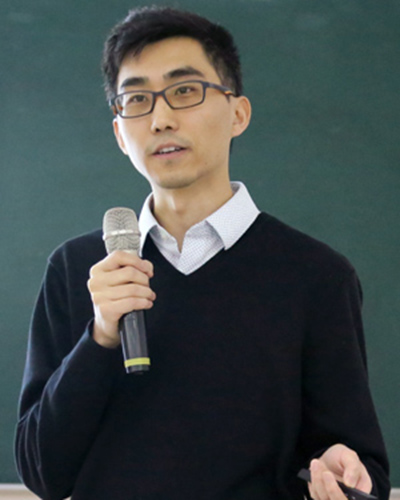
Support Effective Decision Making by Engaging Humans with Predictive Models via Interactive Visualization
Every day, we are continuously generating a huge amount of data in different forms. While many automatic methods have been proposed to extract insights, a tremendous number of tasks are still ill-defined, vague, and exploratory. This calls for more effective and tighter collaboration between humans and machines. My research takes a step to address this issue using interactive and intelligent visualization by involving end-users. In this talk, I will discuss how we utilize and understand predictive models with visualization to engage humans in the loop. I am going to showcase a few example projects situated in a range of real-world applications, such as data exploration, online education, and network analysis. I will also outline a few interesting future directions for using visualization to enhance general data analytical workflows. Read more Read less
Dr. Jian Zhao is an Assistant Professor at the Cheriton School of Computer Science, University of Waterloo. His research lies in the intersection of information visualization, human-computer interaction, and data science. He is dedicated to developing interactive visualizations that optimize the analytical workflow of solving complex real-world data problems. He received his Ph.D. from the Department of Computer Science, University of Toronto. Before joining academia, he was a Senior Research Scientist at FX Palo Alto Laboratory (FXPAL). He is the recipient of several awards such as NSERC Discovery Grant Accelerator Award and six paper awards at top-tier venues (e.g., VIS, CHI, and MobileHCI). He has served on the program committees of many world-class conferences as well as has taken leadership roles in the organizing committees such as VIS, PacificVis, ChinaVis, and ISVC. In addition, he has experiences working at other leading industry labs including Microsoft, IBM, and Adobe Research. He holds more than a dozen patents and some have successfully generated impact on products. More information can be found on his website: www.jeffjianzhao.com. Read more Read less
Johanna Schmidt studied computer science at the TU Wien with a special focus on visual computing. Besides her studies she was working part-time as a software engineer for different companies. Johanna received her master's degree in 2011 and afterwards continued with a Ph.D. in visualization at the TU Wien, which she finished in 2016. She afterwards worked as a scientist at AIT Austrian Institute of Technology where she was responsible for developing visual analytics solutions for domain experts working with large movement data. In 2019 she joined the VRVis, where she became Head of the Visual Analytics group in July 2020. Johanna Schmidts main research focus is on information visualization and visual analytics of large time-series data. She is working with interactive visual systems that can support tasks like data quality assessment, decision making, and predictive modelling. Johanna Schmidt authored several publications being published in high-impact journals like IEEE TVCG and Computer Graphics Forum and in proceedings of highly relevant visualization conferences. Johanna Schmidt is also a a lecturer at the TU Wien and speaks at events (i.e. about Artificial Intelligence at the Europe Day 2019). Read more Read less
Data visualization literacy as a key for data understanding
Visual representations of data have become a major part of our everyday lives. The amount of data visualization techniques to visually represent information has grown exponentially within the last years. Especially due to the Corona pandemic, visual representations of data have become ubiquitous in the daily discourse. However, simultaneously, a detailed understanding of the influencing factors that allow people to use the information visually is still lacking. Data visualization literacy defines the human ability to construct and read data visualizations. The mechanisms for human understanding of data are not researched and understood very well yet. Semantic rules for the understanding of data visualizations would allow researchers to assess the information or meaning users can derive from a visual representation of data. In this talk I will give an overview of the known concepts of data visualization literacy and the important directions for future work. Read more Read less


Social Responsibility of Design Innovation
Rapid development of Artificial Intelligence (AI) technology and its application will change how we think and live in the future, reshape social protocols and moral ethics, resulting in an immense but immeasurable impact. The ethics problems of the big data (with noise) may cause interference and threat to the fairness and inclusiveness in design innovation. In the era of globalization, ubiquitous computing and IoT, designers need to rationally rethink their role as a bridge between humanities and technology, observe and explore the "uncertainty" in AI applications from a new perspective. Read more Read less
Dr. Ying-Qing Xu is a professor of Academy of Arts & Design, Tsinghua University, Beijing China. At Tsinghua University, he serves as Director of the Future Lab, Director of the Lab for Lifelong Learning (TULLL), Director of Tsinghua University-Alibaba Joint Research Laboratory for Natural Human Computer Interaction, and Director of the Center for Cultural Creative Design Research of The Future Laboratory, Tsinghua University. His teaching and researching are user experience design, natural user interface, immersive perception & interaction, tangible perception & interaction, and e-heritage. Before joined Tsinghua University, he was a Lead Researcher of Microsoft Research Asia (MSRA) where he had worked for 12 years since January 1999. Dr. Xu has published over 100 research papers and granted patents, and served as the conference chair, co-chair or program committee members for the academic conferences. He is a fellow of CCF (China Computer Federation), a member of CAA (China Artists Association), CDIA (China Industrial Design Association), ACM (Association for Computing Machinery); and a senior member of IEEE (Institute of Electrical and Electronics Engineers). He holds the B.Sc degree from Department of Mathematics of Jilin University, and Ph.D degree from Institute of Computing Technology, Chinese Academy of Sciences (CAS). Read more Read less
-
March 19, 2021, 9:00 ~ 9:15 JST Watch Replay
Opening Speech:
Masahiko Isobe, President of Kochi University of Technology - Opening remarks,
Xiangshi Ren, Kochi University of Technology - Introduction to Human-Engaged Computing,
Xiaojuan Ma, Hong Kong University of Science and Technology - Program overview. -
March 19, 2021, 9:15 ~ JST Replay on Youtube
Session 1 Chair: Daisuke Sakamoto, Hokkaido UniversityYing-Qing Xu - Social Responsibility of Design Innovation
Mar 19, 9:15 JSTGloria Mark - Distractions, Stress, and Productivity in our Digital Experience
Mar 19, 10:00 JSTAbhishek Gupta - Designing for Humans: Getting Responsible AI in Practice
Mar 19, 10:45 JSTGeneral Q & A
Mar 19, 11:30 JST -
March 19, 2021, 15:00 ~ JST Replay on Youtube
Session 2 Chair: Xiangmin Fan, ISCASAnirudha Joshi - Designing for and with Emergent Users
Mar 19, 15:00 JSTFang You - Design Guidelines for the Size and Length of Chinese Characters Displayed in the Intelligent Vehicle's Central Console Interface
Mar 19, 15:45 JSTGilbert Cockton - Engaging Humanities with Worthwhile Computing
Mar 19, 16:30 JSTGeneral Q & A
Mar 19, 17:15 JST -
March 20, 8:50 - 9:00 JST Replay on Youtube
Opening Speech: Xiaojun Yuan, University at Albany -
March 20, 2021, 9:00 ~ JST
Session 3 Chair: Geehyuk Lee, KAISTJonathan Grudin - Engaging with a Virtual Companion
Mar 20, 9:00 JSTHong Z. Tan - The Science and Art of Conveying Information through Touch for Human-Engaged Computing
Mar 20, 9:45 JSTJian Zhao - Support Effective Decision Making by Engaging Humans with Predictive Models via Interactive Visualization
Mar 20, 10:30 JSTGeneral Q & A
Mar 20, 11:15 JST -
March 20, 2021, 15:00 ~ JST Replay on Youtube
Session 4 Chair: Sayan Sarcar, Tsukuba UniversityMiwako Doi - Interaction with Data-driven Society
Mar 20, 15:00 JSTKazuhisa Shibata - Perceptual and Cognitive Changes Induced by Decoded Neurofeedback
Mar 20, 15:45 JSTJohanna Schmidt - Data visualization literacy as a key for data understanding
Mar 20, 16:30 JSTGeneral Q & A
Mar 20, 17:15 JST -
March 20, 2021, 17:40-17:50 JST Watch Replay
Closing Speech:
Zhiyong Fu, President of ICACHI
Xiaojuan Ma, Executive Vice President of ICACHI -
March 21, 2021
Affiliated Forum on Human · Technology · Future, March 21, 2021 (In Chinese)
Chen Wang
Kochi University of Technology
Xiaofei Zhu
Kochi University of Technology
Yang Li
Kochi University of Technology
Xinhui Jiang
Kochi University of Technology
Qing Xia
Tsinghua University
Takaaki Kubo
Kochi University of Technology
Human-Engaged Computing
The concept of Human-Engaged Computing (HEC) has been published in IEEE Computer, 49(8), entitled, “Rethinking the relationship between humans and computers”, and CCF Transactions on Pervasive Computing and Interaction, 1(4), entitled, “Human-Engaged Computing: the future of Human–Computer Interaction”. HEC has also been presented in an invited panel entitled, “Human Computer Integration versus Powerful Tools” at ACM CHI 2017 (Denver, USA). HEC colleagues also held the SIG entitled, “Approaching Engagement towards Human-Engaged Computing” at CHI 2018 (Montreal, Canada). The HEC article entitled, “Twelve Agendas on Interacting with Information: A Human-Engaged Computing Perspective” (Data and information management, 4(3)) was published recently.
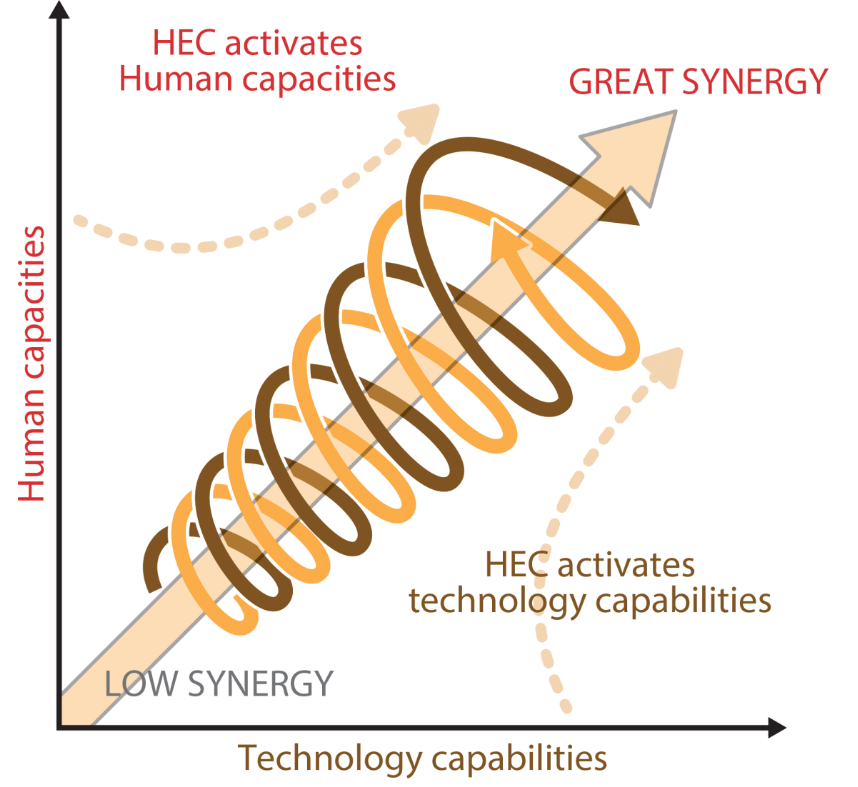
On behalf of the organizing committee of IWHEC 2021, we would like to thank you all guest speakers for your insightful talks and discussions at IWHEC 2021.
For the two-day IWHEC 2021 event, we live-steamed our event to the globe via Zoom, Youtube, Bilibili, and Tencent Wiz. Totally, Over 2600 participants attended this workshop. Your insights lead people to rethink their works and the relationship between humans and technologies.
We also thank the organizing committee members for their great efforts on this workshop, and the session chairs for leading smooth discussions, and all staffs and student volunteers from different universities. Without you all, it is impossible to have this IWHEC 2021 being so successful.
We would also like to express special thanks to the president Masahiko Isobe for opening speech, and our sponsors: Kochi University of Technology, The Engineering Academy of Japan, SIGCHI Japan Chapter, SIGCHI China Chapter, and The HCI Society of Korea.
For people who could not attend this workshop on time due to the time difference or the other tight schedule reasons, we set up the following URLs for replay:
Note: All replays will be NOT available after March 31.
We would like to invite all of our attendees to provide your valuable feedback via a survey. Your suggestions will help us to improve this event in the future.
Thank you again for joining us and we hope to see you in the future IWHEC events.















